The Philips MLED920 is a natural continuation of last year's PML9000 model, but it's not a repeat performance. It's clear that the manufacturer has done its homework – first and foremost, the local dimming algorithms have been improved, which last year tended to significantly degrade the viewing experience. Now, the blacks and contrast look much better, and when combined with the Dolby Vision here, even HDR content looks really decent. The picture occasionally shines where it should, and it doesn’t strain the eyes in more challenging scenes. Undoubtedly, the biggest advantage of the MLED920 is its unique Ambilight system. The three-sided backlighting can give films and games a completely new atmosphere – the screen seems to extend beyond its borders, and the entire room becomes part of the viewing experience. This is something that will be appreciated not only by movie enthusiasts but also by gamers, who, in addition to the lights, get a whole set of features typical for modern gaming TVs: 144 Hz, VRR, ALLM, and Dolby Vision Gaming. In this regard, Philips has a lot to offer. However, there is a significant caveat – this brings us to the most difficult part of this verdict – it is still dual-purpose equipment. On one hand, we have strong picture quality and a unique Ambilight feature, while on the other, there are hardware limitations that are hard to ignore. Titan OS in its current form is a significant bottleneck, filled with bugs and shortcomings that make the television lag behind the competition. Additionally, the price is not low considering the offered capabilities. Therefore, it's hard to recommend it unequivocally to everyone. However, if you are looking for the brightest Philips screen at a reasonable price, with Ambilight, a full set of features for gamers, and basic applications – the MLED920 will be quite a good choice.
- Matching (Score)
- Our verdict
- TV appearance
- Where to buy
- Contrast and black detail
- HDR effect quality
- Factory color reproduction
- Color reproduction after calibration
- Smoothness of tonal transitions
- Image scaling and smoothness of tonal transitions
- Blur and motion smoothness
- Console compatibility and gaming features
- Input lag
- Compatibility with PC
- Viewing angles
- Daytime performance
- Panel details
- TV features
- Apps
- Playing files from USB
- Sound
Philips MLED920 / MLED910 vs Xiaomi S Pro 2026
Direct comparison
MLED920 / MLED910

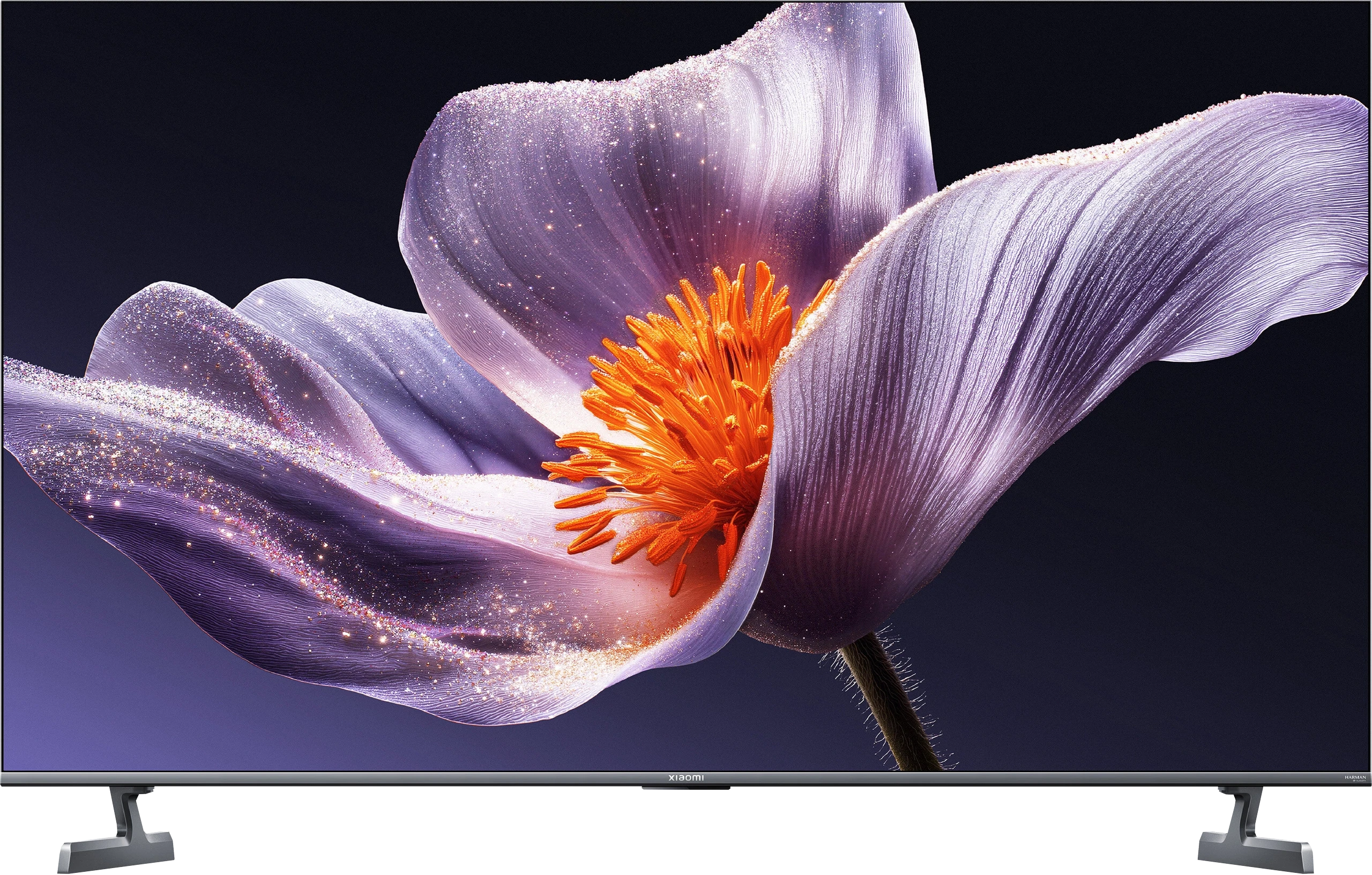
Panel type: LCD VA
Resolution: 3840x2160
System: Titan OS
Model year: 2025
Complete the survey to find out the result

Resolution: 3840x2160
System: Google TV
Model year: 2025
Complete the survey to find out the result

Overall rating
6.5
7.2
Movies and series in UHD quality
6.4
6.7
Classic TV, YouTube
6.8
6.3
Sports broadcasts (TV and apps)
6.8
6.4
Gaming on console
8.5
7.7
TV as a computer monitor
4.0
8.6
Watching in bright light
5.5
7.4
Utility functions
5.5
7.2
Apps
6.7
9.6
Sound quality
6.2
7.1
Complete the survey to find out what fits your preferences
Advantages
Solid black and high contrast thanks to mini-LED backlighting
HDR brightness reaching 700–800 nits in real movie scenes
Support for multiple HDR formats including Dolby Vision and HDR10+
Ambilight – a feature that adds atmosphere, especially in the evening
Lots of supported audio formats: DTS:X, Dolby Atmos, Dolby True HD 7.1
144 Hz panel with support for VRR, ALLM, and Dolby Vision Gaming
Loud sound (up to 88 dB)
Illuminated remote
Good black levels and contrast (SDR)
Very high peak brightness (great for a bright living room)
Complete package for gamers (144 Hz panel, HDMI 2.1, VRR)
Extremely low input lag in SDR mode (below 10 ms)
Surprisingly good, strong sound (branded with Harman Kardon)
Support for Dolby Atmos and DTS:X
Rich Google TV system (with AirPlay and Chromecast)
Proper compatibility with PC (clear fonts and 288Hz mode)
Outstanding price-to-specification ratio
Disadvantages
Titan OS is quite underdeveloped – there are significant bugs and deficiencies in the applications
Few user features
Hybrid infrared remote control
Issues with the fluidity of tonal transitions in dark scenes
The TV is not suitable (aside from gaming) for collaboration with a PC – strong dithering and poor readability of fonts, especially colored ones and on dark backgrounds
Local dimming algorithms practically do not work in HDR content
Useless Dolby Vision Gaming mode (input lag approx. 100 ms)
Poorly implemented HGiG mode
Strongly visible banding (color stepping) in dark scenes
Very weak upscaling and digital image processing
Google TV can "stutter"
Our verdict
Is it worth buying the Xiaomi S Pro 2026? The answer to this question is quite complicated. Let's start with what's really great about this TV. First of all, the Xiaomi S Pro 2026 has an excellent price-to-performance ratio. We get a Mini LED panel with very high brightness, which handles well in a sunlit living room. Additionally, it has a fast 144 Hz (or even 288 Hz) display and a complete package for gamers: two HDMI 2.1 ports, support for VRR, and an impressively low input lag (under 10 ms). If we mainly watch "regular" content and play games, this is truly a fantastic screen. Even the built-in 30W speakers are surprisingly good and support Dolby Atmos. Unfortunately, there’s also a second, very problematic side to this model. In short: the software. We have the impression that Xiaomi has given us great "parts," but couldn't get them to work together correctly. The biggest problem is the HDR mode – the main reason one buys a TV today. For unknown reasons, the TV in HDR mode (HDR10, Dolby Vision) does not manage its dimming zones well. As a result, the black, which should be deep, becomes gray or bluish like in a regular LCD TV. There are also other software issues, such as the terrible implementation of HGiG or the fact that the Dolby Vision mode for gamers is useless due to enormous input lag (100 ms). Furthermore, the TV's capability for digital image processing is very poor. So how do we summarize this in terms of price? In its price class, the Xiaomi S Pro 2026 crushes the competition in terms of specifications. Other TVs for this money are usually simple LCD models without dimming, often only with a 60 Hz panel. The question then is: what is more important to you? If you are simply looking for a very bright and cheap TV for watching television during the day and gaming, and you are willing to calibrate it – you will be very satisfied with it. However, if you are looking for a TV to enjoy spectacular HDR in movies and games straight out of the box, you will be terribly disappointed with this model. In this case, in our opinion, it is better to pay a little more for a basic OLED TV or a more refined Mini-LED model from the competition.
TV appearance

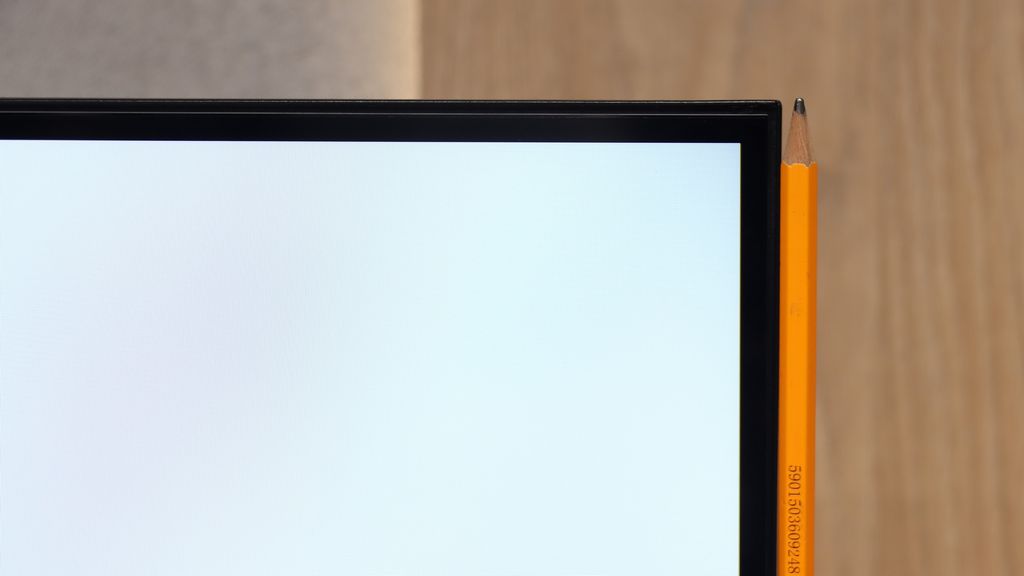

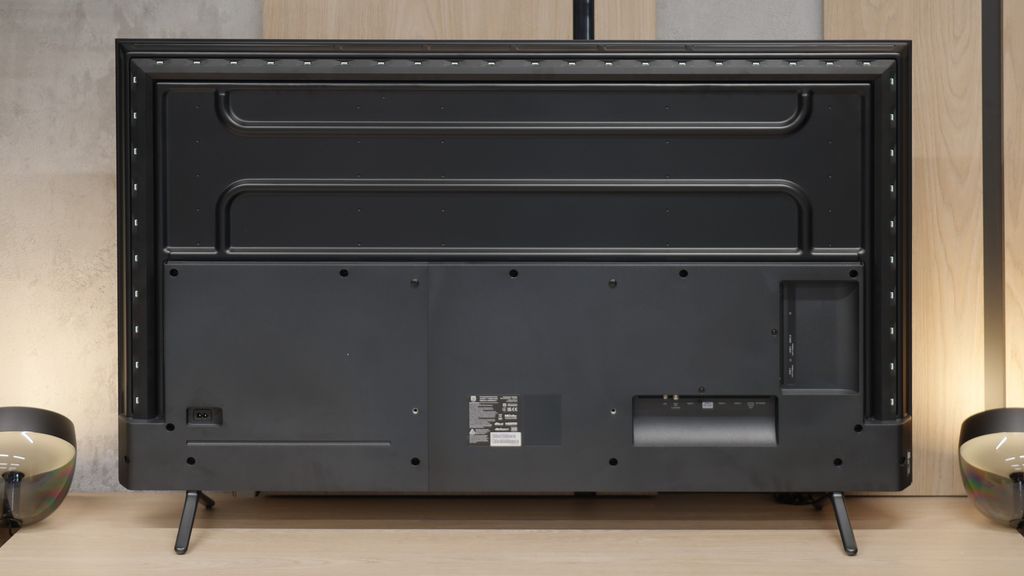




Contrast and black detail
7.9/10
7.4/10
Local dimming function: Yes, number of zones: 144 (12 x 12)
Local dimming function: Yes, number of zones: 532 (28 x 19)
Contrast:

Result
298,900:1

Result
38,500:1

Result
23,950:1

Result
16,850:1

Result
8,000:1

Result
1,001,650:1

Result
52,600:1

Result
17,900:1

Result
17,200:1

Result
10,150:1
Halo effect and black detail visibility:


The Philips MLED920 in the 55-inch version that we had the opportunity to test uses a high-contrast VA panel. The panel itself is one thing, but the true distinguishing feature of this model is the mini-LED backlighting. This largely determines how black levels and contrast appear – and it must be said that Philips has made a significant leap forward compared to the models from 2024, where the local dimming algorithms performed just mediocrely. In this new version, it's much better, and the contrast presented by the MLED920 can really pleasantly surprise. At times, it even resembles the level known from the best LCD TVs on the market – blacks can be deep, the image gains three-dimensionality, and viewing sessions in a dark room create a great impression. Of course, as is the case with any mini-LED TV, this is not an image entirely free from compromises. With a large amount of fine details on the screen, the local dimming algorithms can sometimes get confused – sometimes dimming details more than we would like, and at other times brightening the background, resulting in slight light blue halos around objects (the so-called halo effect). Despite these imperfections, we must emphasize that black levels and contrast are truly a strong point of the Philips MLED920 and definitely one of the reasons to consider it in the mid-range.
Let's get to the point, which is what is most important in the Mini LED panel: black levels and contrast. The Xiaomi S Pro 2026 is built on a VA matrix, which right from the start promises deep blacks. Let's add to that Mini LED backlighting with a very large number of local dimming zones. In the 65-inch variant we tested, we counted as many as 532 of them. That's a solid number that should provide precise control over the backlighting. It should be noted that this number is proportional to the size—choosing the smaller 55-inch variant will result in correspondingly fewer zones, while larger models will have more.
So, how does the black level perform on the S Pro 2026? The answer is complex.
Generally, it's really not bad, and we see a clear improvement compared to the problematic model from 2025. As you can see in our measurement charts, the results are occasionally spectacular. In most of the film scenes we measured in SDR (standard dynamic range), the contrast could be confidently described as very good and even comparable to constructions three times more expensive. Well, it could be... and this brings us to the paradox of this model. The problem lies in how the TV manages zones in scenarios other than SDR. As soon as we feed the TV a higher quality signal, such as an HDR series or Dolby Vision from streaming platforms (Netflix, HBO Max, or Disney+), something strange happens. We have an overwhelming impression that the TV suddenly... forgets that it was equipped with local dimming zones at all. As shown in our video below, the black in such scenes resembles more shades of dark gray or navy blue. On top of that, there's a slight flickering of the entire screen. This is the level one would expect from TVs completely devoid of a local dimming system. It seems that Xiaomi decided to fix one, but crucial flaw of last year's 2025 model over the year. And they succeeded – we no longer have the annoying "zone disco," and the picture is stable. It's just a pity that when consuming top-quality content (HDR), the whole advanced system becomes completely useless.
HDR effect quality
5/10
6.3/10
Luminance measurements in HDR:

Result
722 nit

Result
177 nit

Result
775 nit

Result
131 nit

Result
677 nit

Result
809 nit

Result
526 nit

Result
1033 nit

Result
469 nit

Result
718 nit
Scene from the movie “Pan” (about 2800 nits)


Scene from the movie “Billy Lynn” (about 1100 nits)


Static HDR10


Dynamic: Dolby Vision
Dynamic: Dolby Vision


HDR luminance chart:
Xiaomi S Pro 2026
HDR luminance
Philips MLED920 / MLED910
HDR luminance
In our measurements, the Philips MLED920 achieved even around 900 nits in static tests, which is a really solid result for a mid-range TV. In practice, this translates to a lot of satisfaction during viewing sessions – in scenes rich in bright light, such as the first, third, or fifth test screens, the screen was able to generate about 700 nits, which is enough to feel the true "HDR effect." However, it cannot be denied that the limited number of backlighting zones and the compromises of mini-LED dimming algorithms in more demanding scenes reveal their nature. In sequences with small light sources – such as the moon or a scene from the movie Sicario 2 – the television clearly prioritizes maintaining deeper blacks at the expense of the brightness of those small elements. For most viewers, this is still a reasonable compromise, as the dark background tends to look much better, though one must be aware that the details themselves may not impress with intensity. There is also some disappointment regarding colors. Although the applied PFS filter (the equivalent of quantum dots known from QLEDs) does its job and colors appear quite vivid, the coverage of the DCI-P3 color space reaches "only" 90%. In everyday viewing, this will be sufficient, but in extremely colorful productions – such as the latest Disney animations – one can notice that some tones are not as vibrant as they could be in other constructions.
When it comes to HDR quality, the Xiaomi S Pro 2026 is undoubtedly a really bright TV. On our synthetic measurement charts, we were able to generate a peak brightness of around 1400 nits. This is not only a very good result but even spectacular, considering the price of this model. However, as we always repeat, for our editorial team, measurements and experiences from the content we watch every day—movies and series—are more important. So let's analyze how Xiaomi handles film material. Unfortunately, the result is somewhat mixed. When very bright scenes appear on the screen, the S Pro 2026 truly shows its full potential and can achieve real brightness of 800-1000 nits on bright elements. Moreover, even smaller objects can "burn" the eyes— in scenes from the movie Sicario 2, small metallic elements of the helicopter were really bright. The problem is this—and here the story comes full circle back to our assessment of contrast—that in such scenes, we cannot count on absolutely cinematic black. In our opinion, this compromise is too significant; high visibility of details in bright areas should not come at the expense of such a substantial boost in black levels. And even though the HDR effect itself can be striking here, it is important to remember that when very difficult, mixed scenes appear on the screen, we may feel a slight disappointment. Exactly the one we mentioned in the previous paragraph regarding dimming issues in HDR mode. On a positive note, it is worth adding that the S Pro 2026 is equipped with an additional PFS filter (which works similarly to a QLED layer), effectively broadening the color palette coverage. As a result, measurements showed a DCI-P3 color gamut coverage of up to 94%. This gives us the confidence that in most colorful scenes, the image will look rich and appropriately saturated.
Factory color reproduction
5/10
4.1/10


Factory Mode
After calibration


Factory Mode
After calibration
Like every Philips television we tested, we primarily evaluated the MLED920 in Filmmaker mode – this is supposed to be the "most honest" mode, designed for films and to faithfully convey the creators' intentions. Indeed, in terms of colorimetry, it performs the best among all the modes available on the television, but it is not without its flaws. The first thing that stands out is the white balance. The image has a slight tendency to take on purple-pink tones, which gives it a somewhat unnatural character. However, an even bigger problem turned out to be what we mentioned earlier – image clipping. Just look at the gamma or EOTF graphs to see that the line deviates significantly beyond the norm, falling below the value of 1.8. In practice, this means "clipping" the brightest whites, where the image becomes almost milky. Fortunately, most of these issues can be corrected – the MLED920 responds to calibration, and with a few adjustments, the image quality can be significantly improved.
Of course, we conducted all our measurements in "Film" mode, which is usually the best and most accurate choice you get straight out of the box. And we have to say it bluntly: even though this is the best mode, it is still very far from ideal. First of all, the television has a clear tendency to give the image a cool, bluish tint – this is due to a poorly set white balance. Additionally, there is a problem with how the S Pro 2026 manages its brightness right after being taken out of the box, which results in an overly bright image. These two flaws contribute to really huge colorimetric errors (Delta E). In HDR content, they were able to exceed our expected error scale of "10" (meaning values close to 20). For reference – the threshold of perceivable error by the human eye is a Delta E value of around 3. Results at the level of 20 mean that the image significantly deviates from what the director intended.
Color reproduction after calibration
7.5/10
7.2/10




After calibration, we managed to largely tame the white balance – to the extent that the average viewer will not be able to detect color inaccuracies. The characteristic pink-purple glow that previously disturbed the naturalness of the picture has also disappeared. The color palette has been organized, and the colors appear more consistent and neutral. The gamma in SDR content after calibration looks really good – there's no sign of the earlier “bleeding” effect in bright scenes. The picture has become more contrasted and devoid of the milkiness that previously spoiled the perception significantly. In the case of HDR content, the improvement is also noticeable, although it is still evident that the television is “doing its own thing.” The EOTF curve cannot be fully shaped, as Philips simply does not provide tools in its settings that allow for precise control over this parameter. In many films, the television simply still showcases the image “in its own way.” Despite these limitations, calibration has brought quite a lot of good – it has managed to minimize most of the color inaccuracies and significantly improve the overall balance of the picture. However, it must be remembered that certain barriers arise from the very hardware construction and they simply cannot be overcome.
So how does the S Pro 2026 perform after our calibration treatment? We must admit that after calibration, the television becomes a really pleasant device for watching everyday content. As you can see in the graphs, we managed to bring both white balance and gamma values to nearly perfection in HD (SDR) material. Most importantly, the colorimetric errors have become practically invisible to the human eye. In this scenario, the S Pro 2026 is simply a great television that, after professional calibration, can provide a lot of enjoyment while watching. However, it is worth noting clearly – our efforts helped little in 4K HDR mode. Despite calibration, the television still interprets the image rather strongly "in its own way," which is clearly seen in the measurement of the EOTF curve (luminance tracking). It's a bit of a shame, because this shows that the problem lies not in the panel itself, but in the software. Underdeveloped image management algorithms in HDR content can, unfortunately, disqualify this television for many more discerning users.
Smoothness of tonal transitions
6.5/10
6.9/10












The fluidity of tonal transitions in the Philips MLED920 is not its strongest suit. In our tests, we quickly noticed that the television has noticeable problems in darker scenes – for example, segments from the movie The Green Knight or test grayscale palettes. There, you can see the characteristic banding of colors and too sharp transitions between shades, which can be quite noticeable in productions with a darker style. Fortunately, the situation looks better in brighter scenes – there the image appears smooth and free of major artifacts.
Let’s now move on to the analysis of tonal transitions, meaning the fluidity with which the television can render transitions between closely related shades. In the case of the Xiaomi S Pro 2026, the image that emerges from this is extremely dichotomous. On one hand, we have bright gradations. When scenes with blue skies or other smooth transitions in the bright parts of the image appear on the screen, the S Pro 2026 handles them excellently. They look perfectly smooth, without any visible artifacts.
Unfortunately, the situation changes drastically as soon as dark scenes take over the screen. To put it bluntly – they look really poor. Instead of a smooth tonal transition in the dark, the joins of colors and unsightly "stepping" of gradients are very clearly visible on the screen. In darker films or games, this is very noticeable and can effectively ruin the viewing experience.
Image scaling and smoothness of tonal transitions
7/10
4.5/10
Smooth transition function
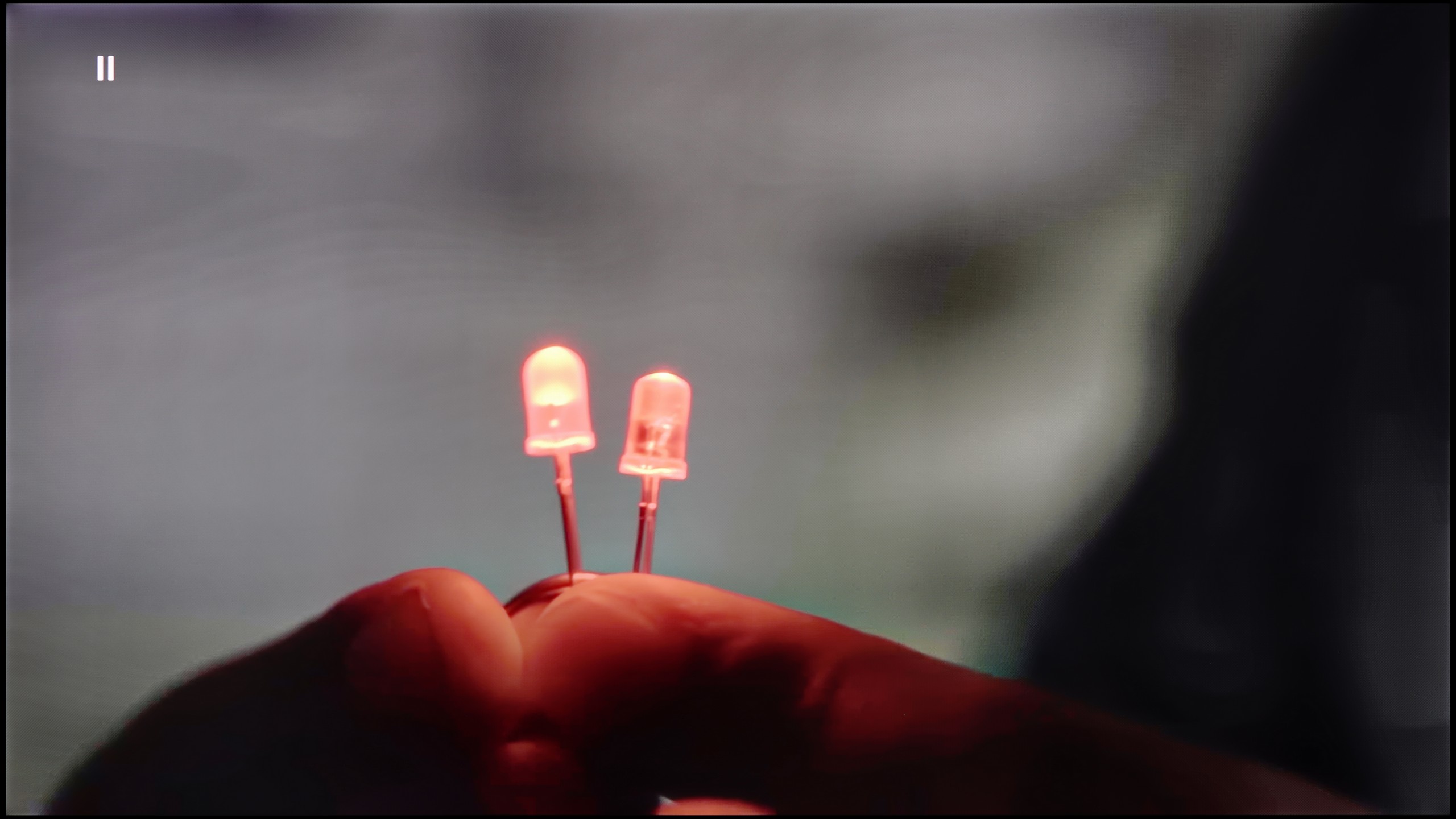
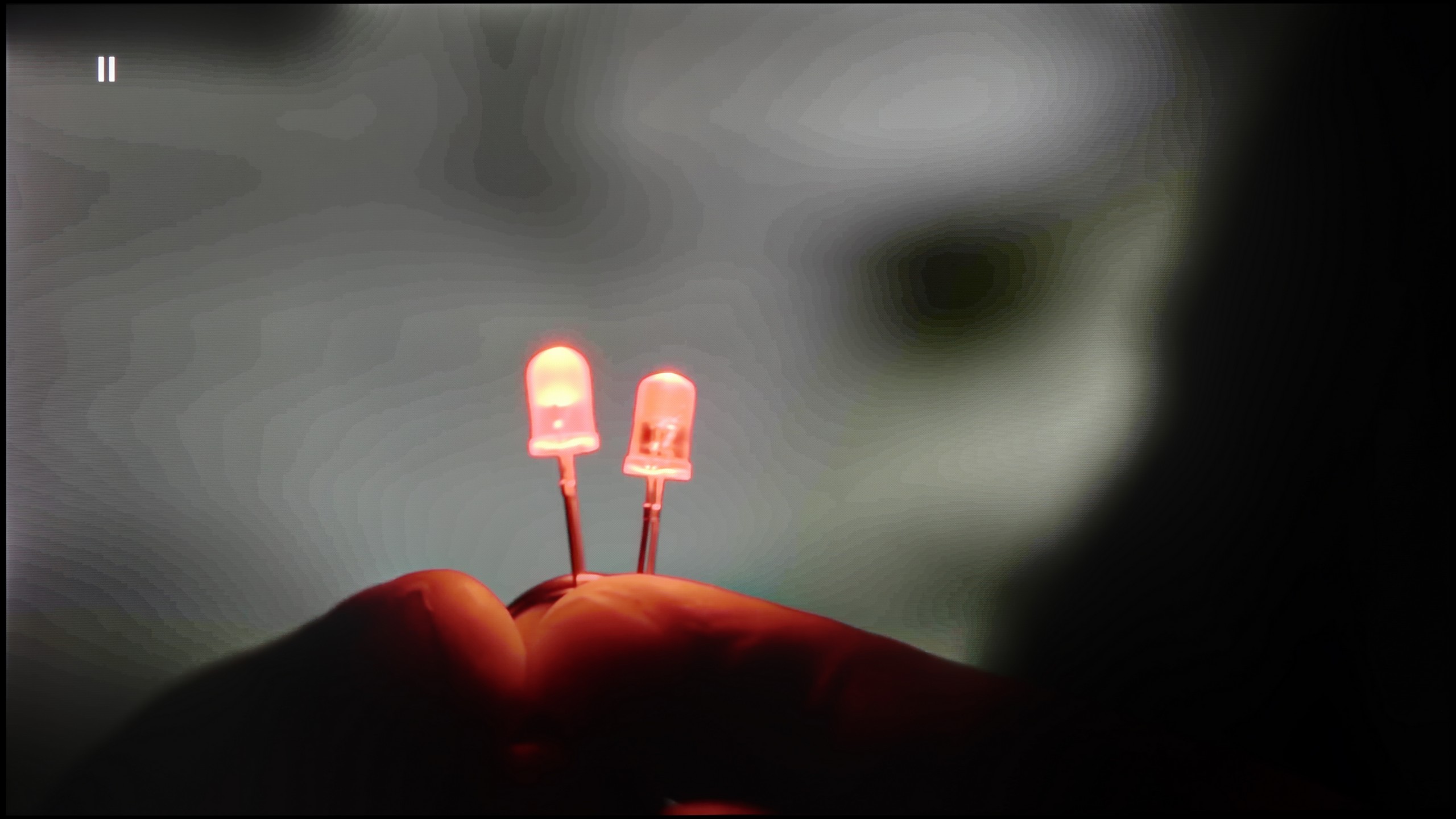
Image without overscan on the SD signal


The manufacturer equipped this model with several features that improve signal quality, and although we usually approach such "enhancers" with skepticism, they turn out to be really helpful here. The key option is called "distortion reduction" – it works best at a medium level because, on one hand, it effectively smooths out unwanted banding and color transitions, while on the other, it doesn't excessively cut details, which keeps the image looking natural.
The situation is a bit worse with upscaling. Lower quality materials – such as test videos with models – appeared soft and lacking in sharpness. Yes, this can be somewhat corrected with the sharpness slider in the menu, but the effect still remains far from what competitors in a similar price range offer. Philips therefore still needs to work on this aspect because, in light of the successful improvement of tonal transitions, the upscaling simply performs poorly.
Let's start with the issue we addressed in the previous paragraph: can a TV even fix the problem of poor tonal transitions in dark scenes? Theoretically, yes – in the menu, we find a feature with the promising name "Color Contour Removal." Well, "theoretically." Unfortunately, in practice, this setting – regardless of which of the three power levels is selected – yielded absolutely no real results. So we have a feature that, in practice, only exists in the menu. Moving on to the quality of upscaling (scaling the image from a lower resolution to 4K), unfortunately, we have more bad news for you. The S Pro 2026 handles this task very poorly. Interestingly, the phenomenon of "overscan" (slight image cropping) is not a big issue here. The problem is that the TV simply displays a very raw, unprocessed image. Its attempt to upscale the signal to a higher resolution looks simply poor and lacks any "smart" enhancement. There is no denying it – the whole digital image processing is the true Achilles' heel of this model.
Blur and motion smoothness
7.7/10
7.5/10
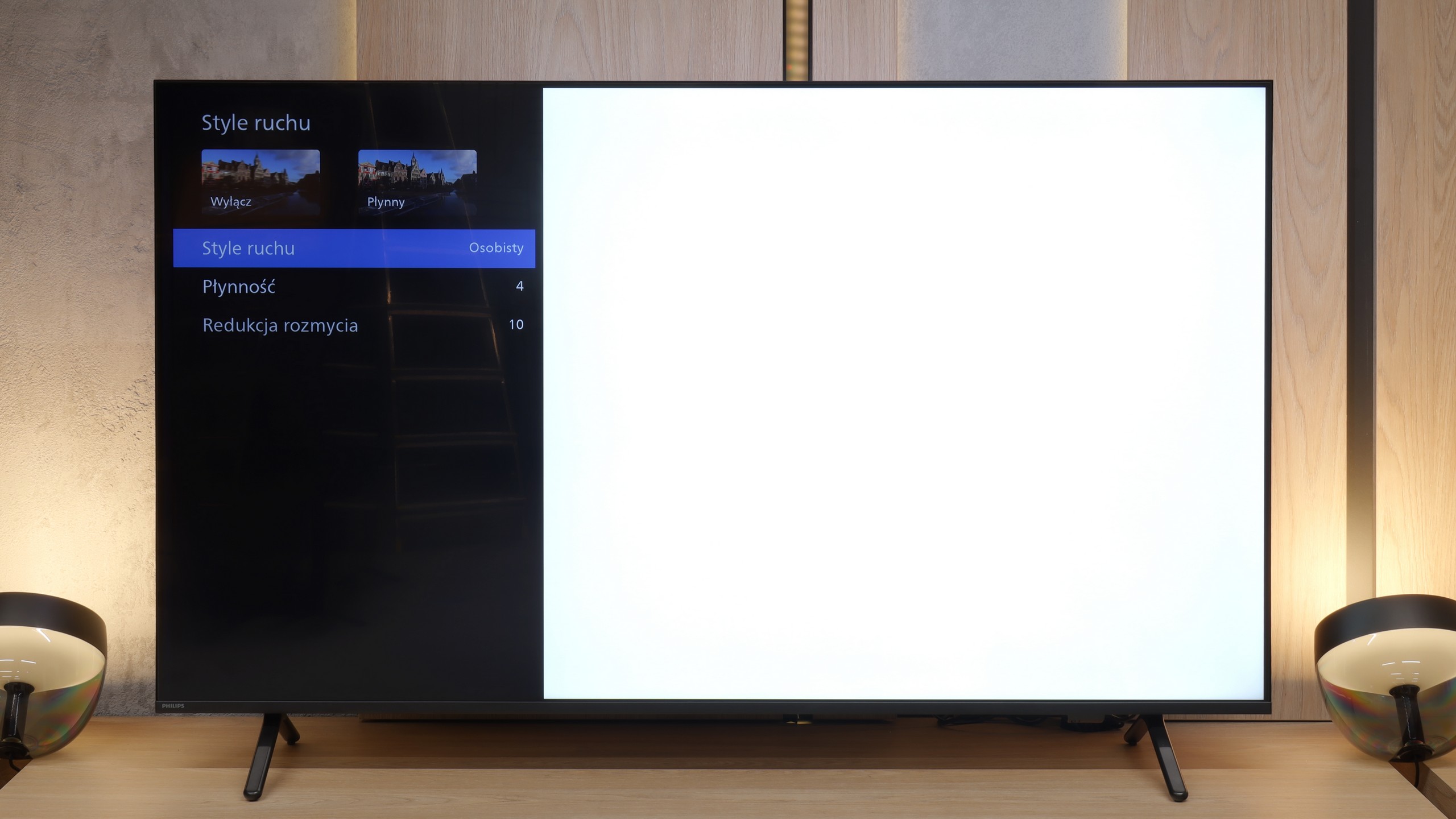
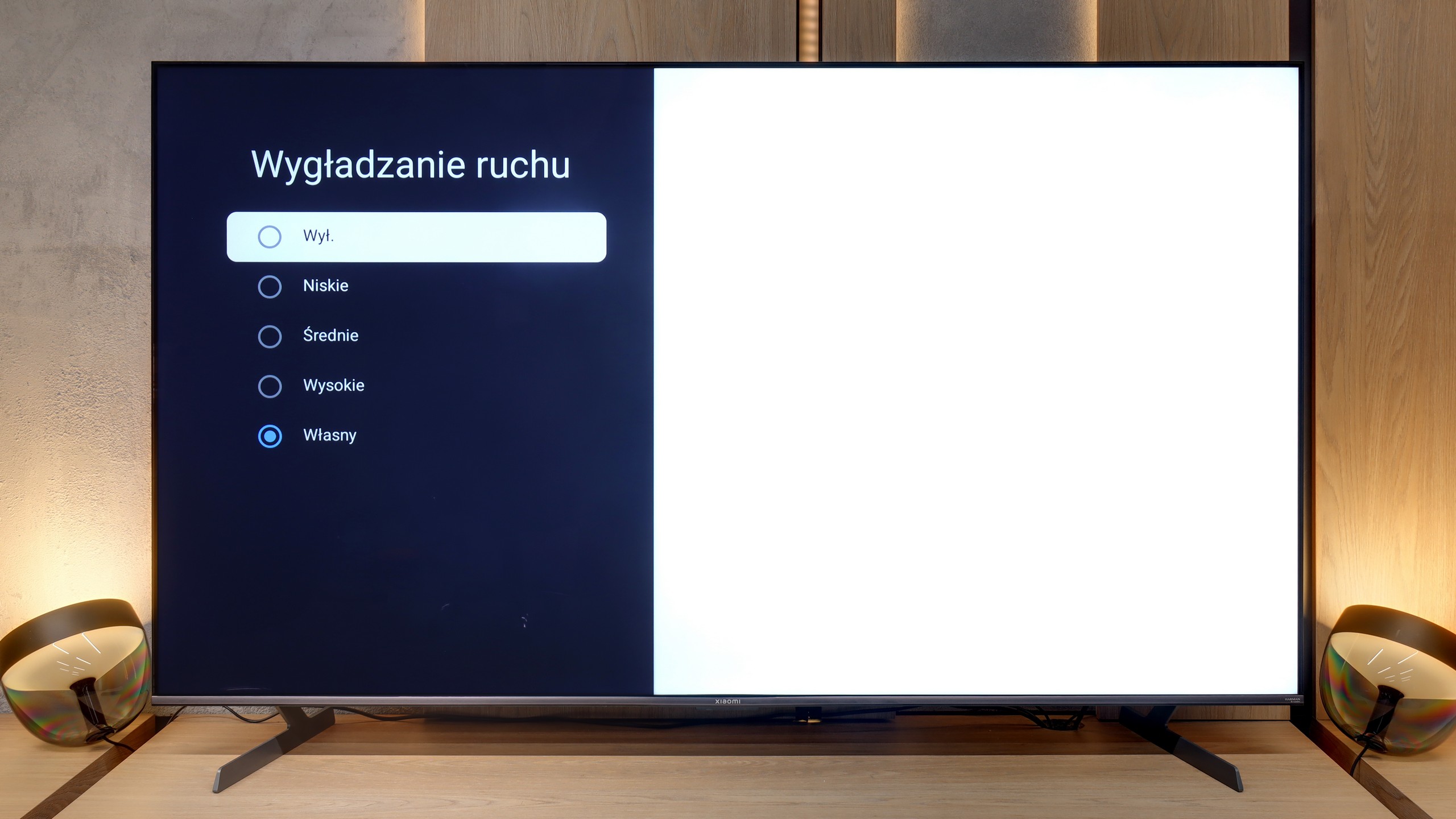
Blur (native resolution, maximum refresh rate):






Smużenie (4K@144Hz):



Smużenie (1080p@288Hz):



The Philips MLED920 features a 144 Hz panel, which immediately suggests that we shouldn’t complain about motion smoothness. And indeed – the motion blur is relatively low here for a VA panel, and although one might occasionally notice slight issues on darker backgrounds, they are not something that most people would notice during regular viewing.
A major plus is the presence of a motion smoother called "Motion Style." It allows you to adjust the smoothness to your own preferences – if someone prefers a more “theatrical,” almost television-like image, they can increase the sliders, and if they want to preserve the natural “jitter” of a cinematic frame, they just need to set lower values. This way, everyone can find the perfect balance.
On paper, the specification of the S Pro 2026 looks impressive. The television is equipped with a native 144 Hz panel, capable of displaying images up to 288 Hz in a dedicated gaming mode. These are amazing results, but what interested us the most, in the context of everyday use, was how the television handles motion blur and how the image looks at 120 Hz. After all, this is the frequency used today by consoles like PlayStation 5, Xbox Series X/S, and it is desired by sports fans. Generally speaking, the panel "holds up." The matrix is fast enough to meet these challenges, and objects displayed at native 120Hz fluidity are shown correctly. As for the software, the television is equipped with a motion smoothing system, but with a key caveat – it only works for input signals up to 60 Hz. This means it is mainly suitable for classic television, movies, and series. Thanks to this, we can adjust the fluidity of the image to our own preferences – from a very smooth, "theatrical" approach to setting the slider to "zero" and maintaining a fully cinematic character.
Console compatibility and gaming features
9.8/10
8.2/10
- ALLM
- VRR
- VRR range48 - 144Hz48 - 144Hz
- Dolby Vision Game Mode
Yes, high input lag
- Correct implementation of HGIG
- 1080p@120Hz
- 1440p@120Hz
- 4K@120Hz
- Game bar

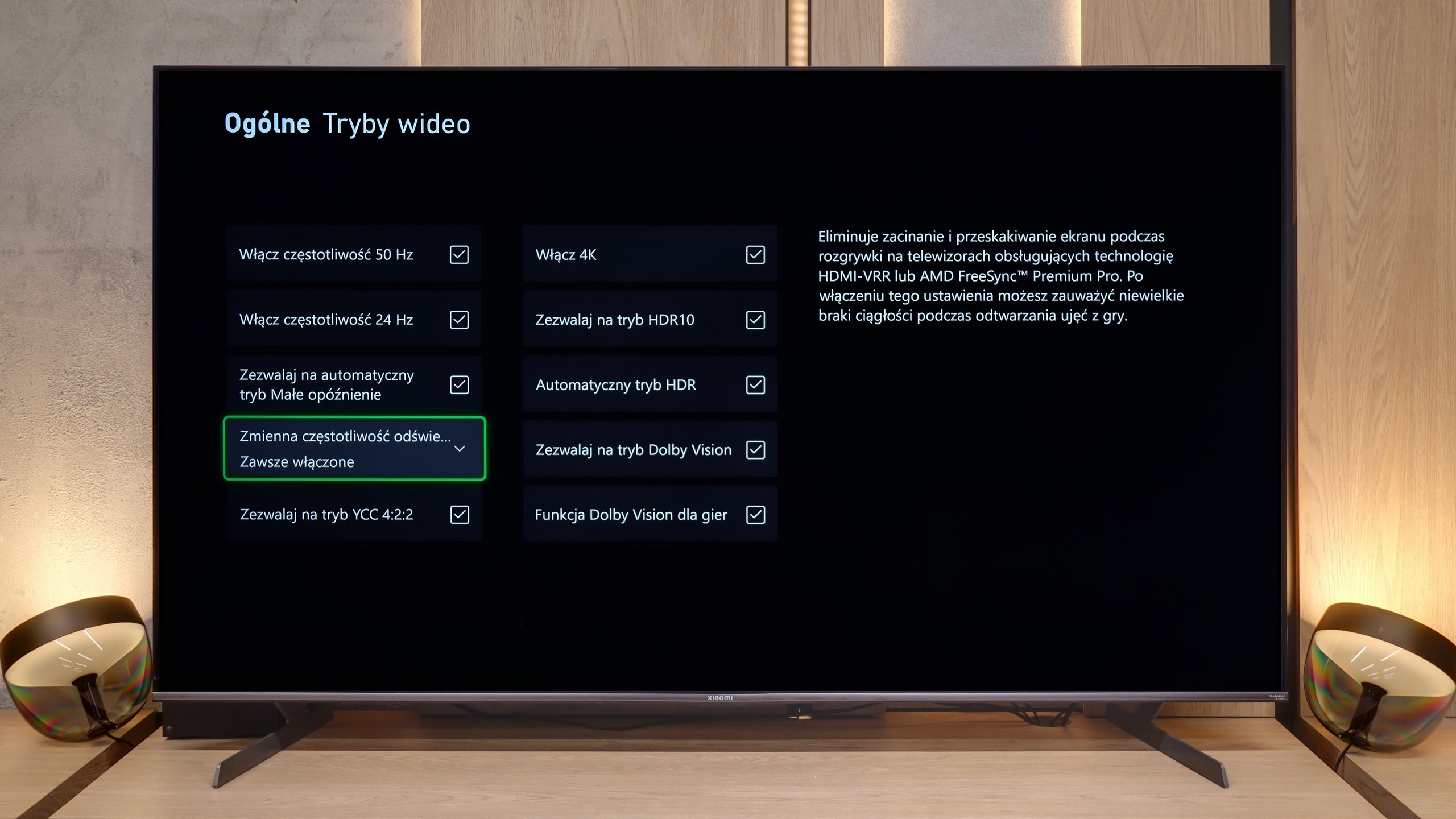

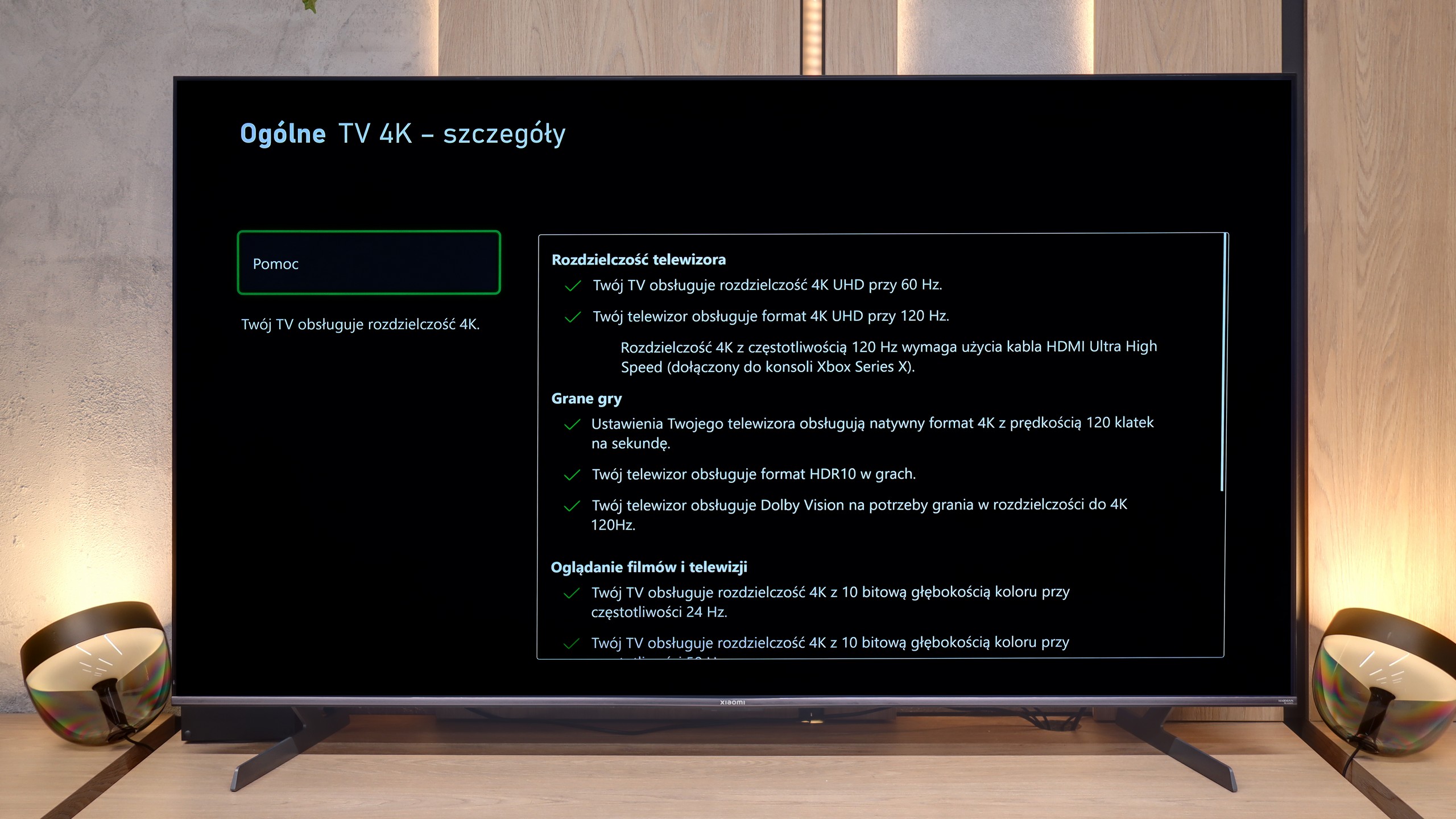


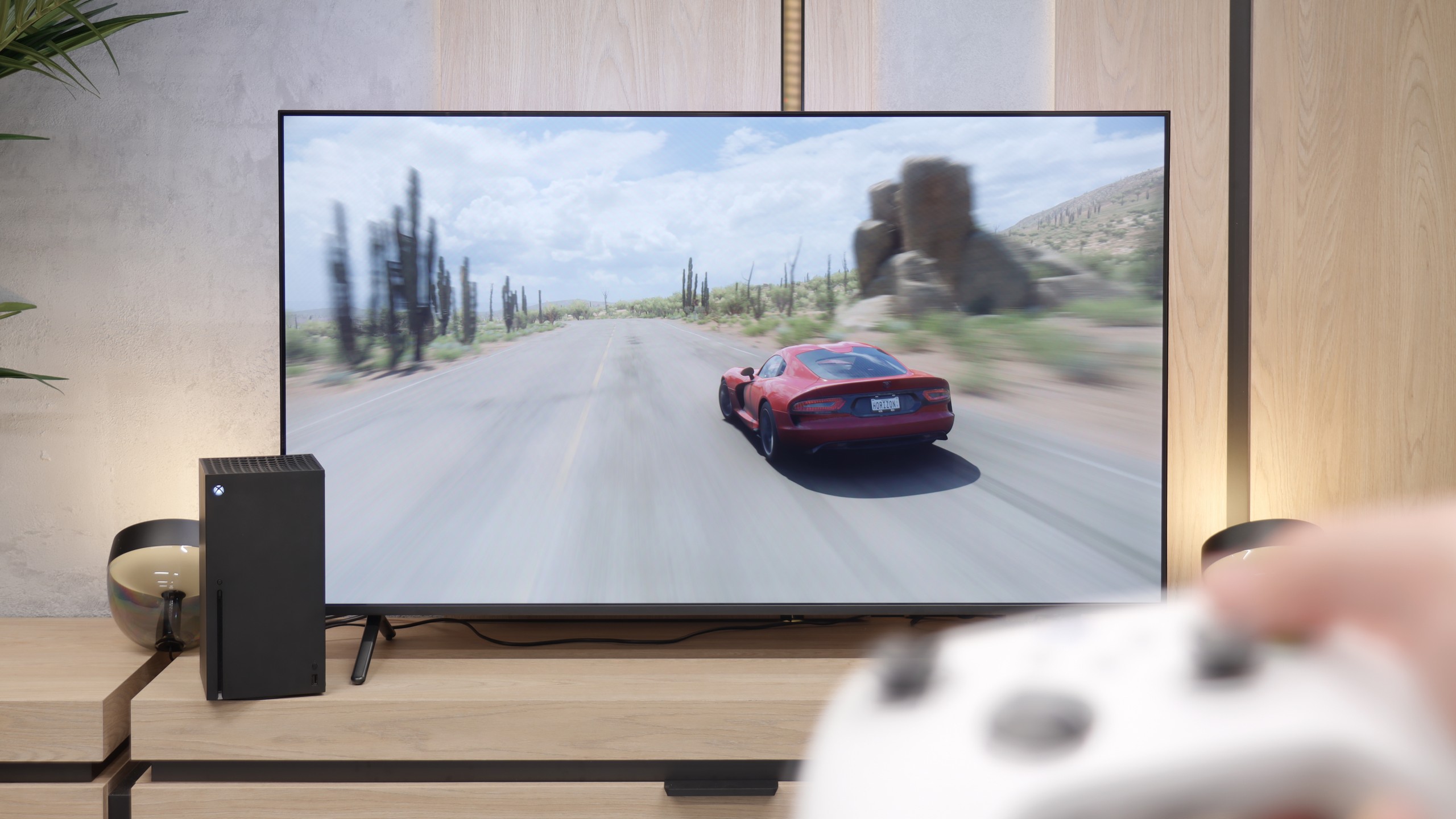
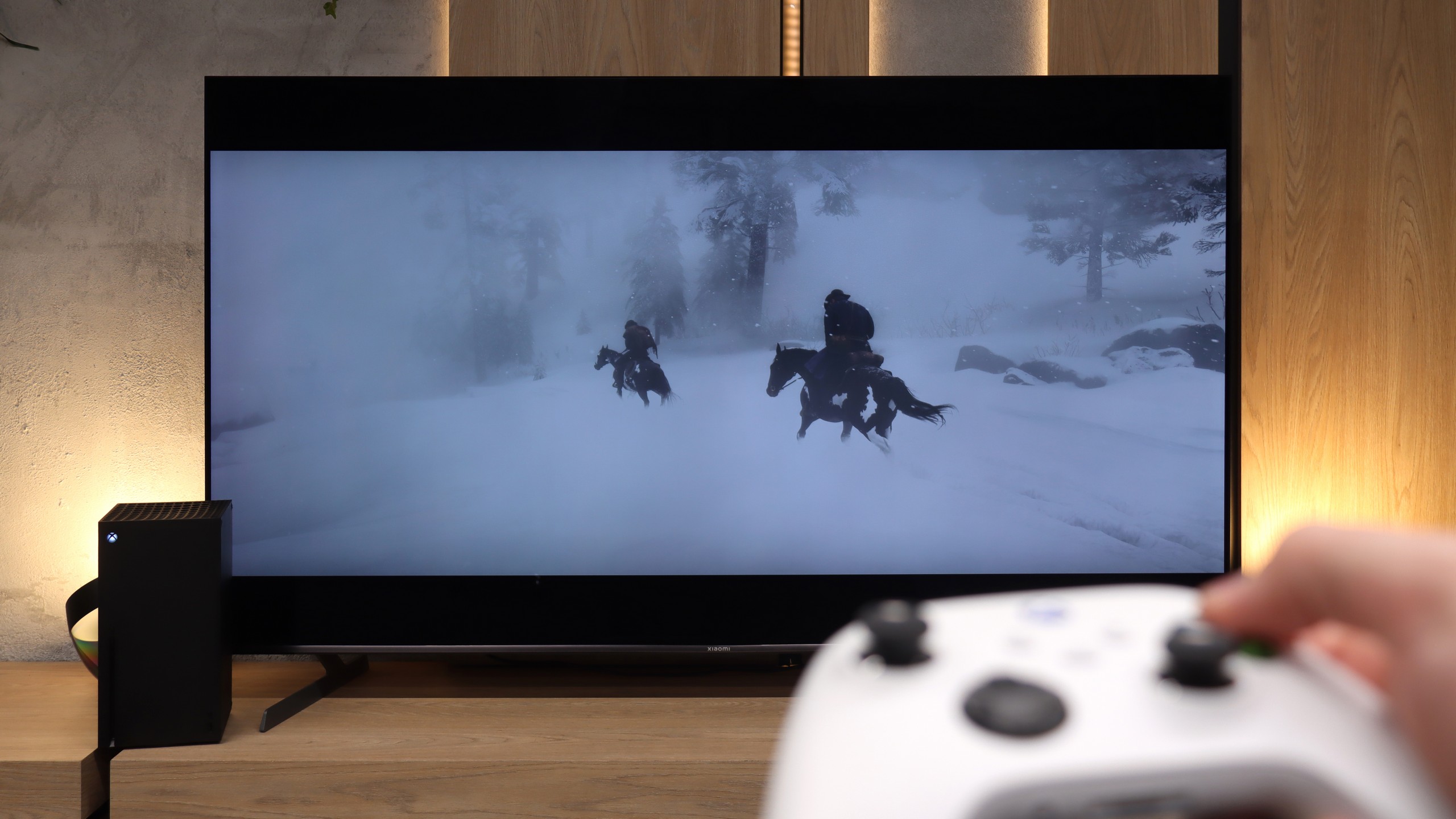
For gamers, the Philips MLED920 is truly a complete tool. The manufacturer has taken care of everything that today is considered standard in televisions designed for consoles and PCs. It features ALLM, so the console automatically switches the screen to game mode, it has VRR and 144 Hz refresh rate, which guarantees smooth gameplay even in fast titles. All key HDR formats are supported – including HGiG and Dolby Vision Gaming for Xbox – which means that regardless of what you are playing and on which console, the TV will be able to extract maximum potential from the image. In everyday gaming, the Game Bar also proves to be useful – a relatively simple implementation by Philips, but a functional panel where you can quickly check image parameters, turn on VRR, or adjust details without leaving the game. It may not be as advanced as the competition's offerings, but it performs its job flawlessly. And lastly, something that distinguishes Philips from its competitors – Ambilight. The three-sided LED backlighting can make a huge impression in games, especially in the evening. It also provides a way to slightly "expand" the screen and feel greater immersion. And since colorful LEDs have recently become almost a mandatory element of a gamer’s room, the MLED920 fits into this trend perfectly.
For gamers, the Xiaomi S Pro 2026 is, on paper, an almost ideal proposition. It is equipped with two HDMI 2.1 ports, allowing us to unlock (although these options are somewhat hidden in the menu) the full suite of features: ALLM, VRR, and, crucially, the ability to work in 4K at 144 Hz. This last feature should particularly please owners of powerful PCs. The TV also has something akin to a gaming panel – and while it’s hard to call it a full-fledged "Game Bar," it does its job by displaying key information. It’s just a shame that in its default form, it covers a relatively large part of the screen.
However, our biggest issue with this model concerns how the S Pro 2026 handles gaming in HDR mode. To put it bluntly: it doesn’t handle it well. Due to the poorly implemented HGiG function (the HDR tone mapping standard for games), during the initial HDR calibration on the console, it’s very easy to "blow out" the image. If someone is unaware of this software flaw and follows the on-screen instructions, they will simply set the image incorrectly, with burnt-out details in bright areas. Another major problem is the Dolby Vision mode for gaming. While it does work, it generates such a high input lag that it becomes noticeable in dynamic titles. (All our latency measurements can be checked in the paragraph below). In summary: generally, it’s a really good screen for gamers, but with one small caveat. We would rather avoid HDR mode on it – unless we decide to manually adjust the brightness bar on the console "by eye," completely ignoring the instructions from the console's pictogram.
Input lag
9.6/10
8.5/10
SDR
HDR
Dolby Vision
Input lag on the Philips MLED920 is really very good – in 120 Hz mode, we measured values below 10 ms, placing this model among the absolute leaders of LCD televisions in terms of responsiveness. Even at 60 Hz, a result of around 18 ms is fully acceptable and won’t hinder any type of gameplay. A certain exception is the Dolby Vision mode at 60 frames, where the lag can increase to even 35 ms. This result might be slightly noticeable for esports players, but we must honestly admit – for the majority of so-called “casual gamers,” it will be absolutely unnoticeable. Especially since we’re talking about values that still allow for comfortable gaming without major compromises.
We move on to one of the most important measurements for gamers, which is input lag. Overall, the Xiaomi S Pro 2026 performs exceptionally well in this regard. Generally, in game mode, the lag is very low. With 120 Hz content (from consoles or PCs), we easily achieved results below 10 ms. These results are truly remarkable and practically imperceptible for most people, even those very sensitive to it. Unfortunately, there is one "but" that poses the greatest issue with this model in gaming. We are talking about the Dolby Vision Gaming mode. When this mode is activated, the input lag rises to an astronomical level of around 100 ms. At such a value, the delay between our movements on the controller (we tested on an Xbox console) and what is displayed on the screen becomes really very large and annoying. Therefore, our recommendation is simple: we absolutely do not recommend using Dolby Vision Gaming mode on this television.
Compatibility with PC
4/10
8.6/10
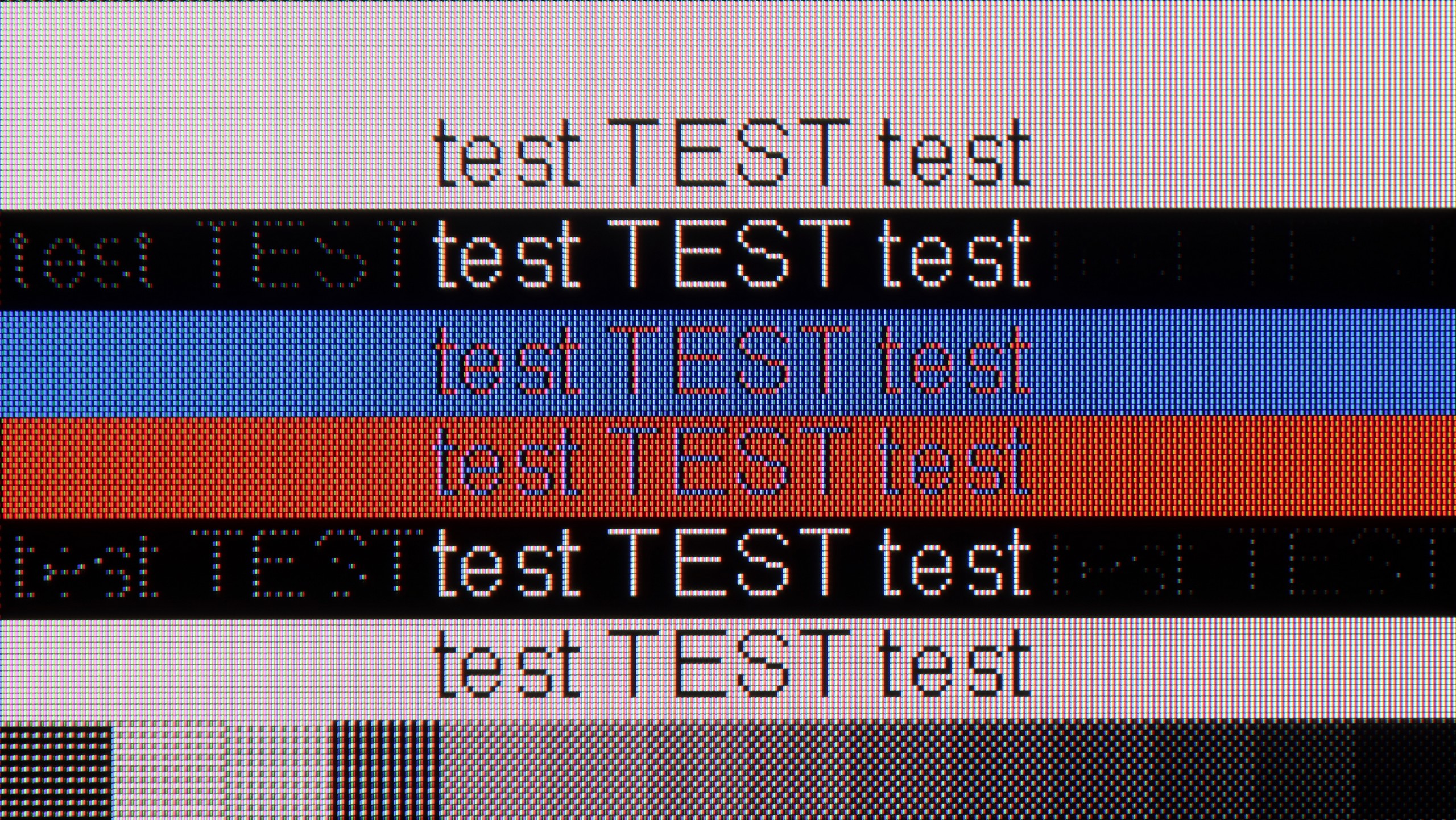
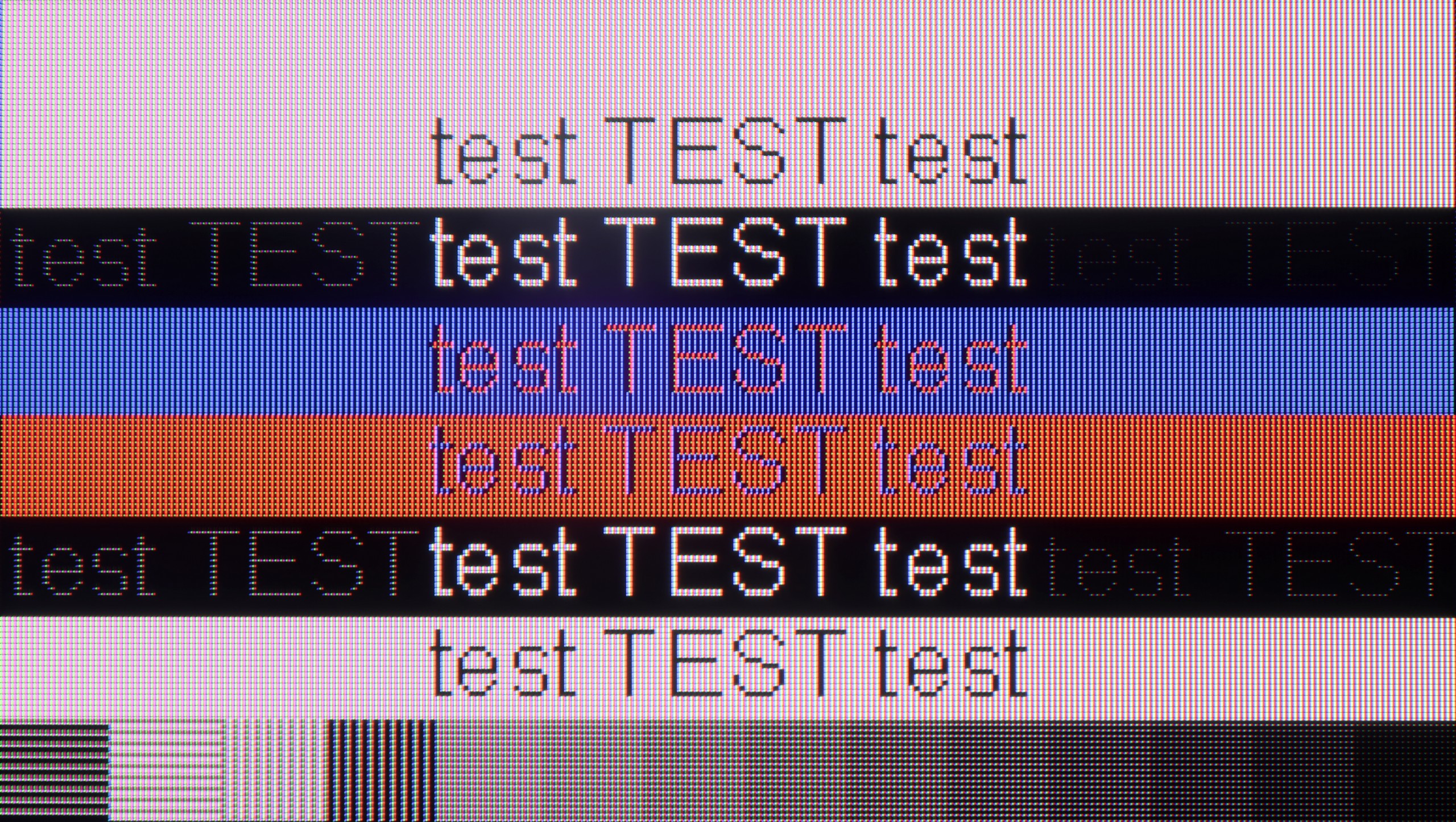
When it comes to working with a PC, the Philips MLED920 evokes rather mixed feelings. On one hand, it looks impressive on paper – we have 144 Hz, support for G-Sync and FreeSync, so in terms of gaming on a PC, the television does not disappoint. Anyone looking for a large screen for computer gaming gets a solid package of features here. However, when we try to use it as a typical monitor for daily work, its limitations quickly become apparent. The fonts do not look their best – there is noticeable strong dithering, colorful letters can be jagged, and with very dark text, strange anomalies appear, as if the panel loses thin lines and has trouble accurately reproducing them. In short: Yes for PC gaming. For any work and reading text: a firm no.
Generally, when it comes to gaming, the S Pro 2026 is a great screen for PC owners. It offers a refresh rate of up to 288 Hz in Full HD resolution or a full 144 Hz in 4K. All of this, supported by technologies like AMD FreeSync and G-Sync, is really a lot for very demanding gamers. And how about "desktop" work? Here we have positive news as well. Although the displayed font may not be perfectly sharp (like on a dedicated PC monitor with an IPS panel), it is presented in a really pleasant and readable way. This is due to the proper implementation of Chroma 4:4:4 sampling, which ensures that text is clear and there are no issues with color fringing.
Viewing angles
3.2/10
3.7/10
The viewing angles on the MLED920 are classic for VA matrix technology – even a slight shift from the center causes the colors to begin to fade, the contrast weakens, and the overall picture becomes quite flat and unattractive. There are no miracles here. So if you’re watching movies with a larger group and everyone is sitting a bit off to the side, this will be slightly noticeable. On the other hand, you gain something for this: thanks to this matrix, the MLED920 can display a much deeper black than televisions with IPS panels.
As for a TV equipped with a VA panel, we must admit that the drop in brightness when viewed at an angle is relatively small in the Xiaomi S Pro 2026. However, it is important to keep in mind a second, key aspect – color saturation degrades significantly at an angle. This is typical behavior for TVs with a VA panel that do not have additional coatings to widen viewing angles. Is this a flaw of this TV? Not really. It is simply a characteristic, the price we have to pay for the key advantages of a VA panel in the form of its high native contrast.
Daytime performance
5.5/10
7.4/10
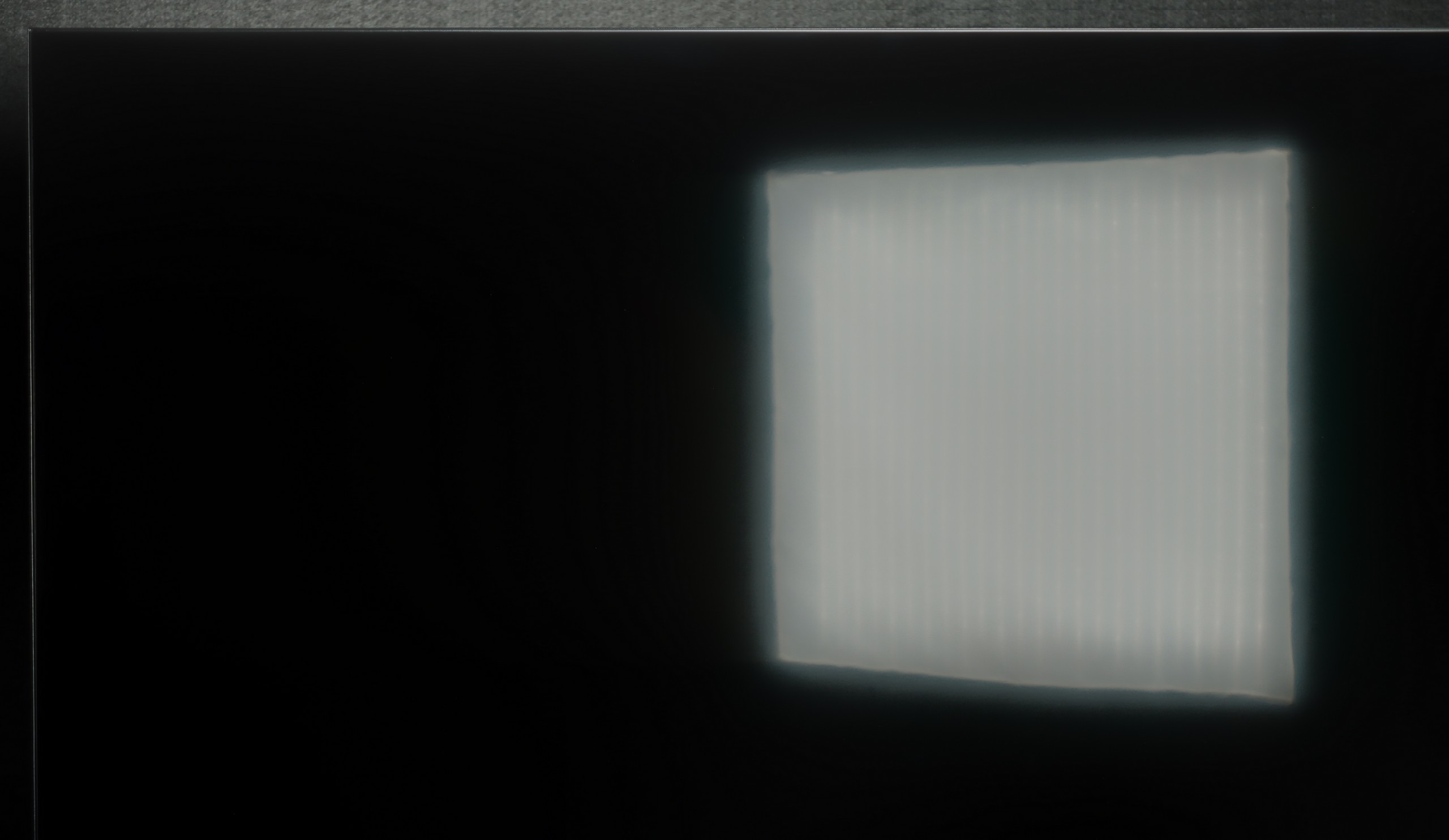
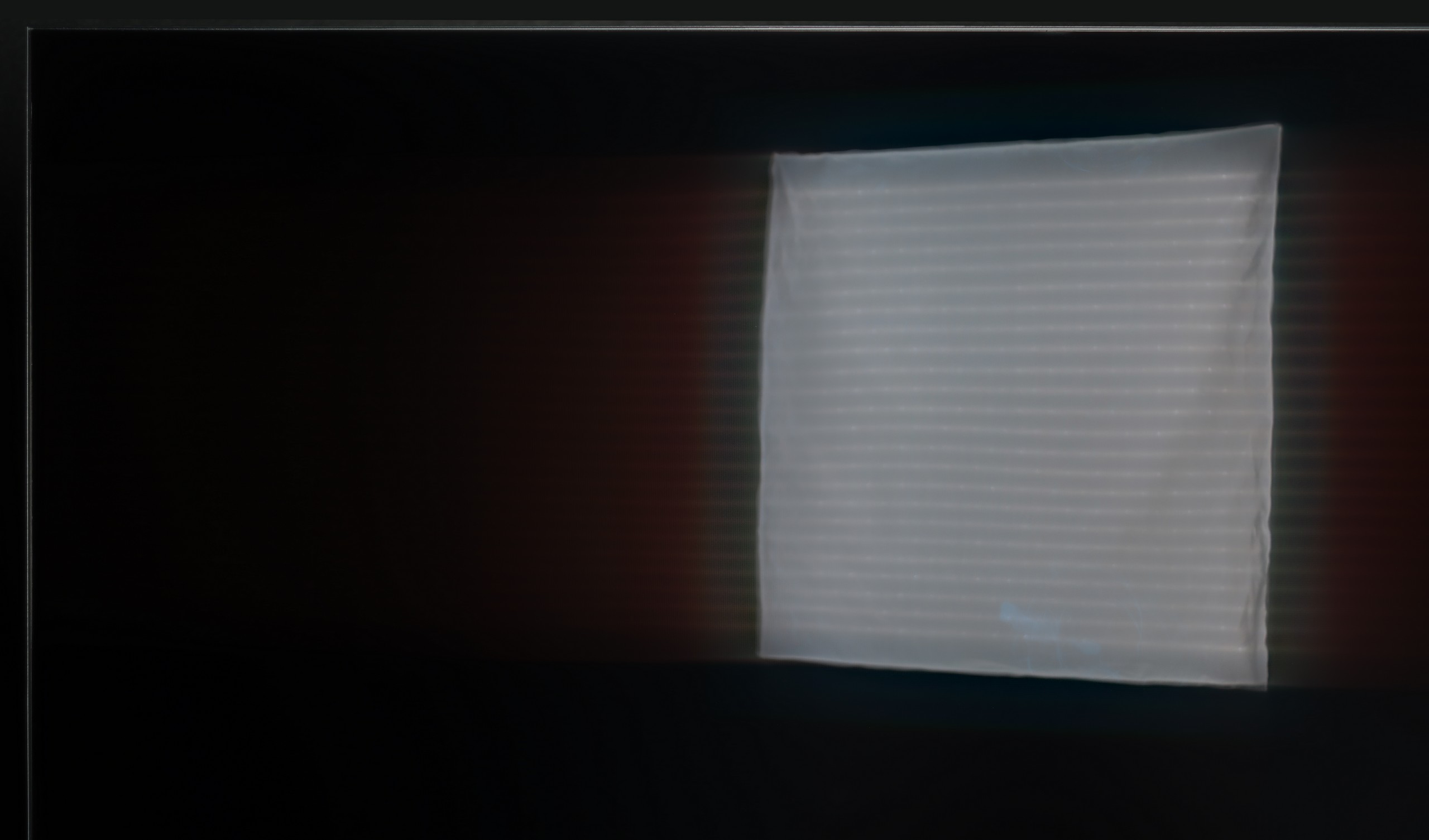


Panel brightness
Average luminance SDR
Xiaomi S Pro 2026: 771 cd/m2
Philips MLED920 / MLED910: 421 cd/m2
The Philips MLED920 performs fairly well in everyday use. The satin coating on the panel effectively reduces reflections, and in most moderately sunny living rooms, it manages unwanted glare. However, it is important to remember that this is not a television that impresses with brightness – the average value in SDR hovers around 450 nits. In very bright rooms, especially with large south-facing windows, the screen may not always overcome intense daylight. In such situations, it's worth supporting it with at least light curtains so that viewing comfort doesn't suffer significantly.
Due to its very high peak brightness, the Xiaomi S Pro 2026 performs really well in brightly lit rooms. In most scenarios, it is able to "break through" even very strong lighting in the room. However, it should be noted that the matrix used here quite poorly suppresses reflections. This means that in darker areas of the image, or when the TV is displaying a dark scene, direct reflections (e.g., the reflection of a window or lamp) can be annoying. Nevertheless, the S Pro 2026, as a TV for a bright living room, performs really well thanks to its powerful brightness.
Panel details
Subpixel Structure:
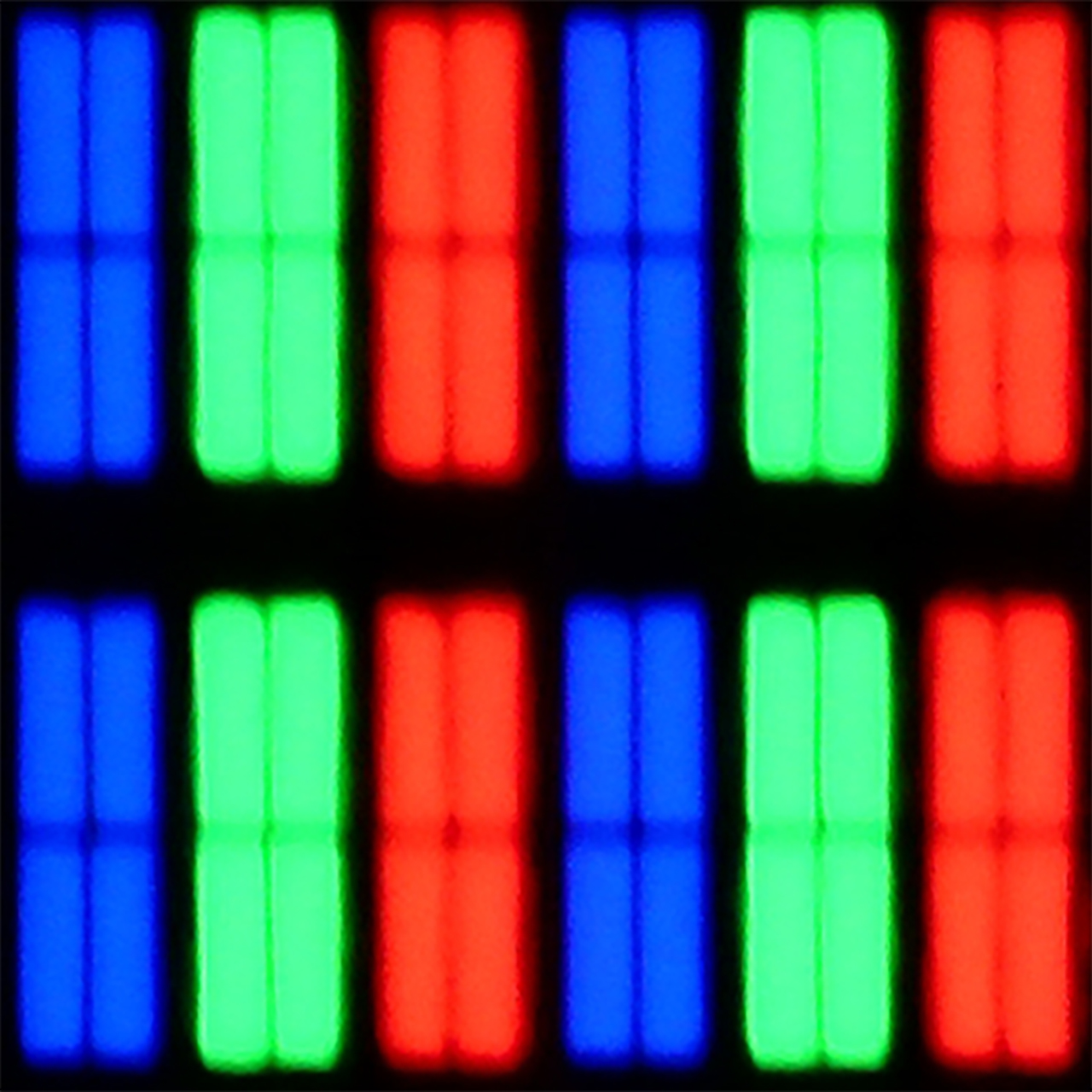
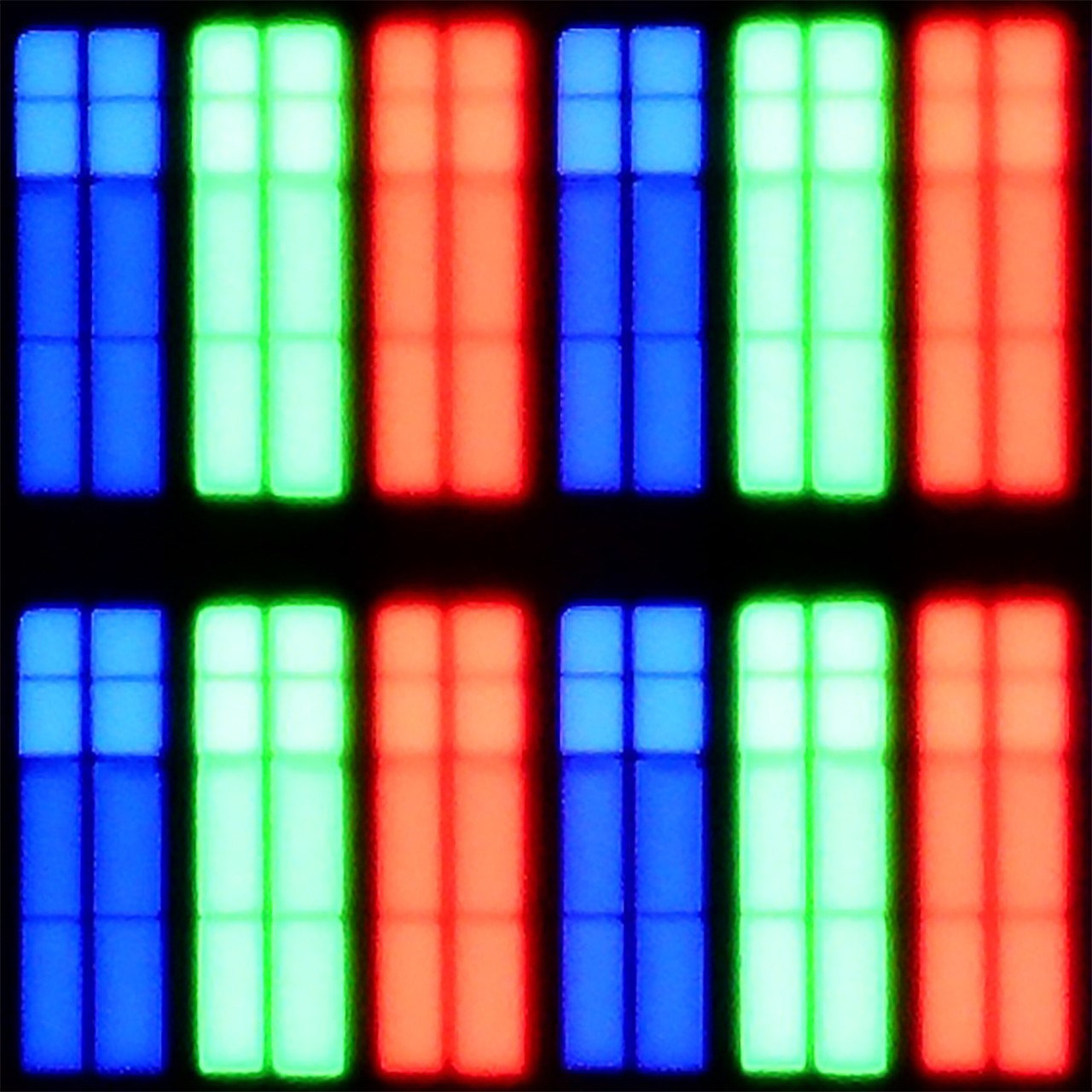
Panel uniformity and thermal imaging:



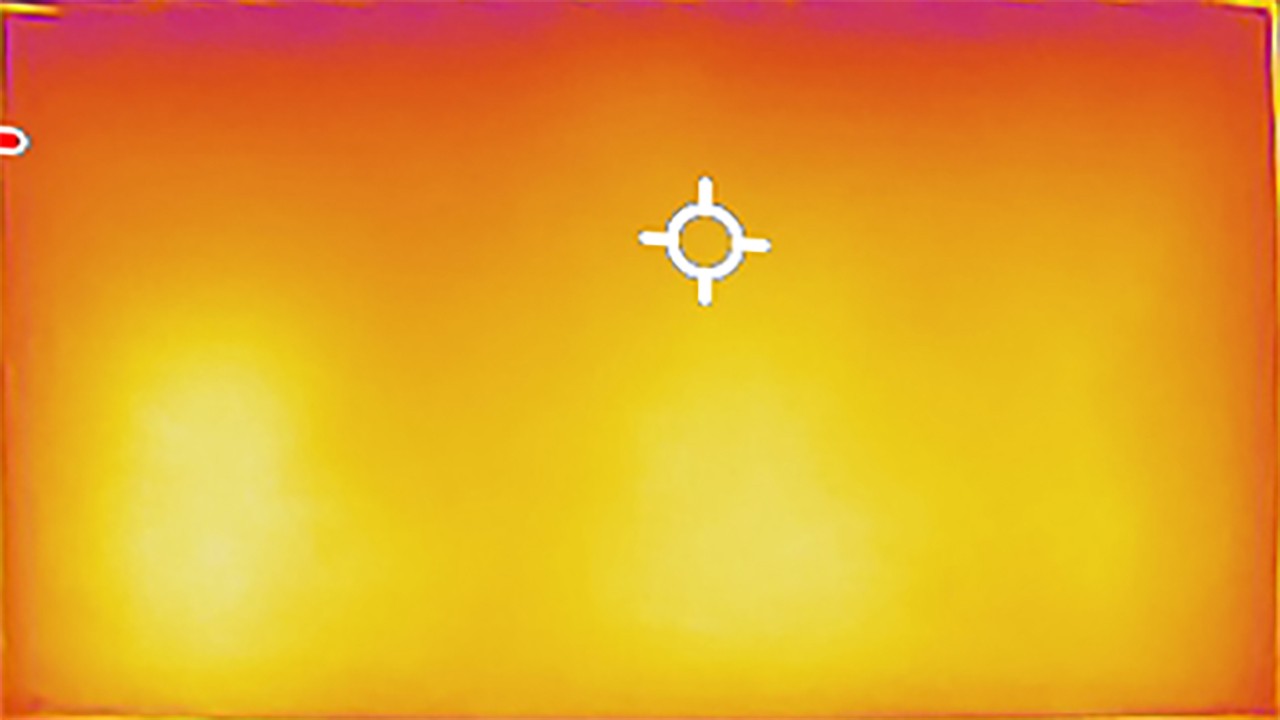
Philips MLED920 / MLED910
Xiaomi S Pro 2026
TV features
5.5/10
7.2/10
- HDMI inputs0 x HDMI 2.0, 4 x HDMI 2.1 48Gbps1 x HDMI 2.0, 2 x HDMI 2.1 48Gbps
- OutputsToslink (Optical audio), eARC (HDMI), ARC (HDMI), Mini-Jack (Headphones)Toslink (Optical audio), eARC (HDMI), ARC (HDMI), Mini-Jack (Headphones)
- Network InterfacesWi-Fi 2.4GHz, Wi-Fi 5GHz, Ethernet (LAN) 100MbpsWi-Fi 2.4GHz, Wi-Fi 5GHz, Ethernet (LAN) 100Mbps
- TV receptionDVB-T, DVB-T2, DVB-S, DVB-S2, DVB-CDVB-T, DVB-T2, DVB-S, DVB-S2, DVB-C
Classic features:
- Recording to USB (terrestrial TV)
- Recording programming
- Picture in Picture (PiP)
- RF remote control (no need to aim at the screen)
- Backlit remote control
- Teletext
- Audio only mode
- Bluetooth headphones support
- Simultaneous Bluetooth headphones & TV audio
Smart features:
- AirPlay
- Screen mirroring (Windows Miracast)
- Voice search
- Voice search in native language
- Ability to connect a keyboard and mouse
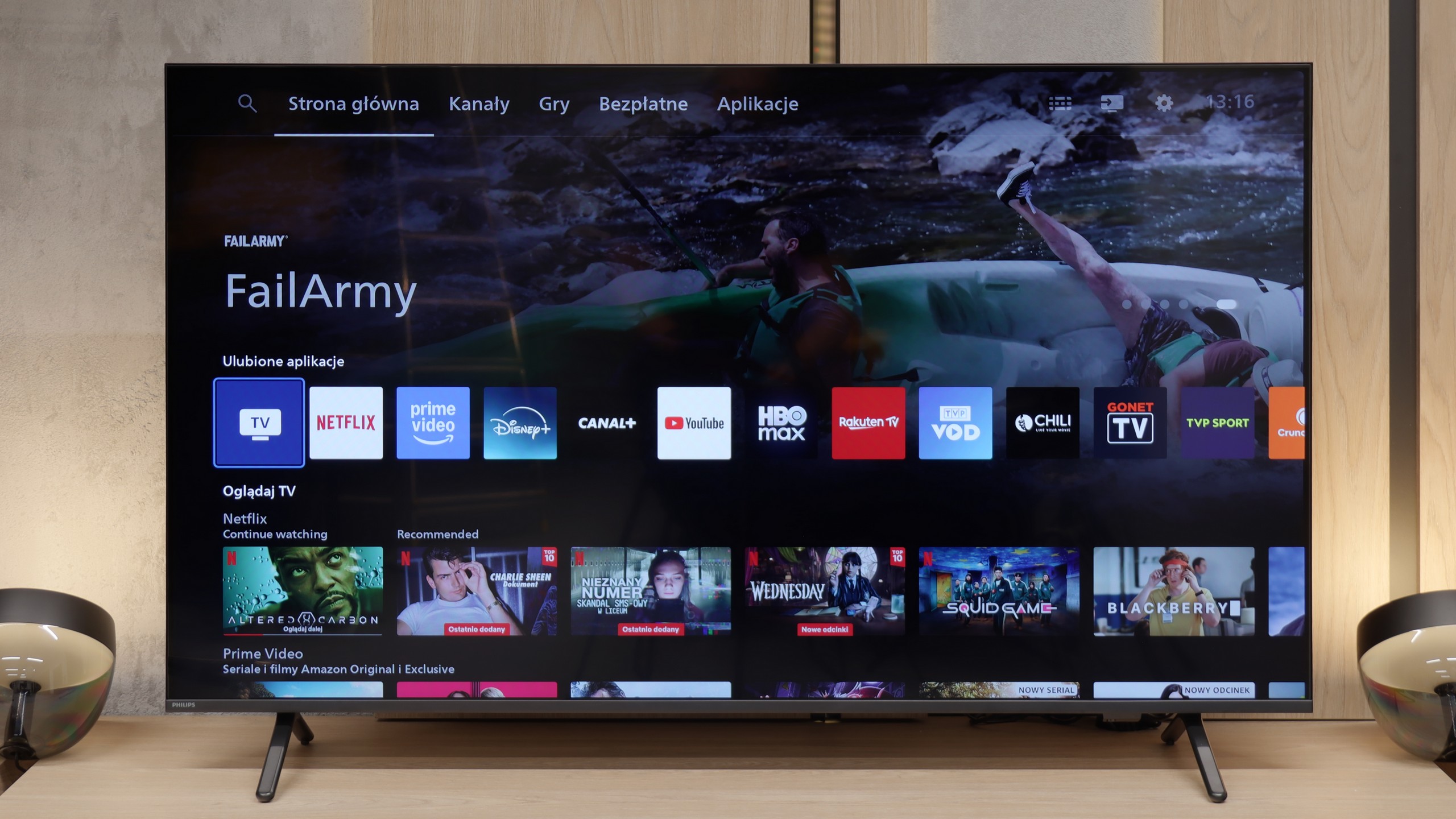
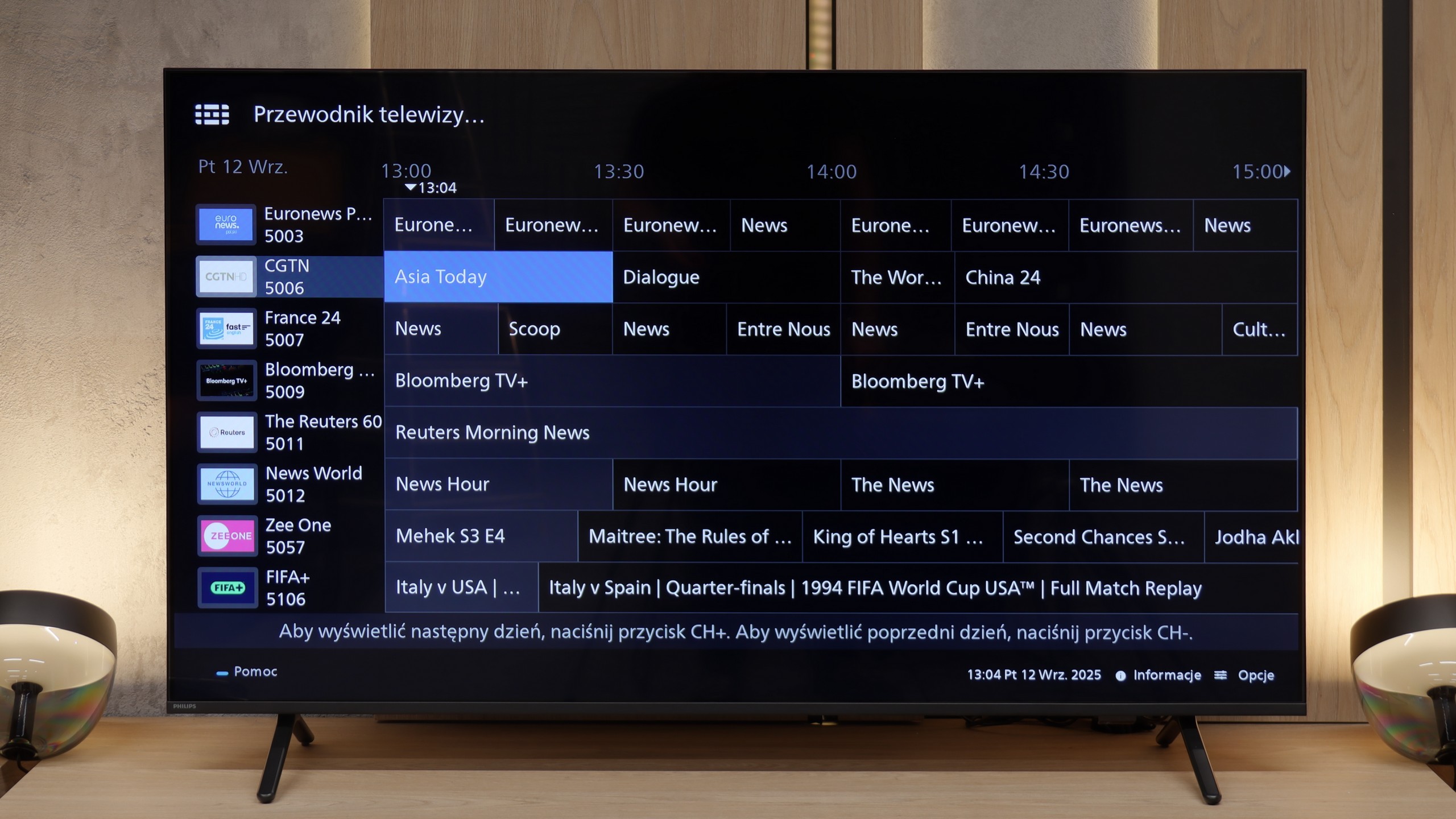
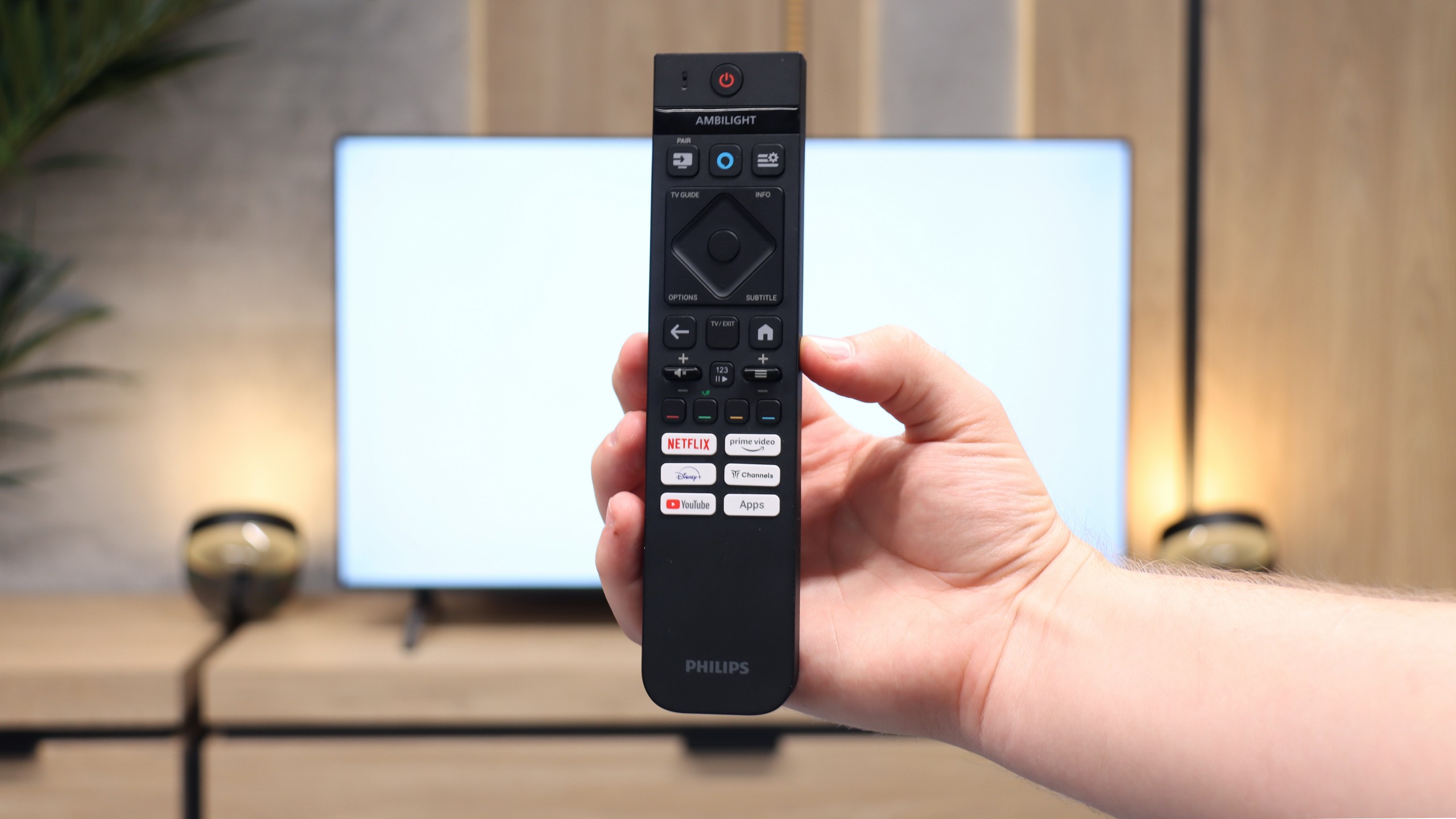

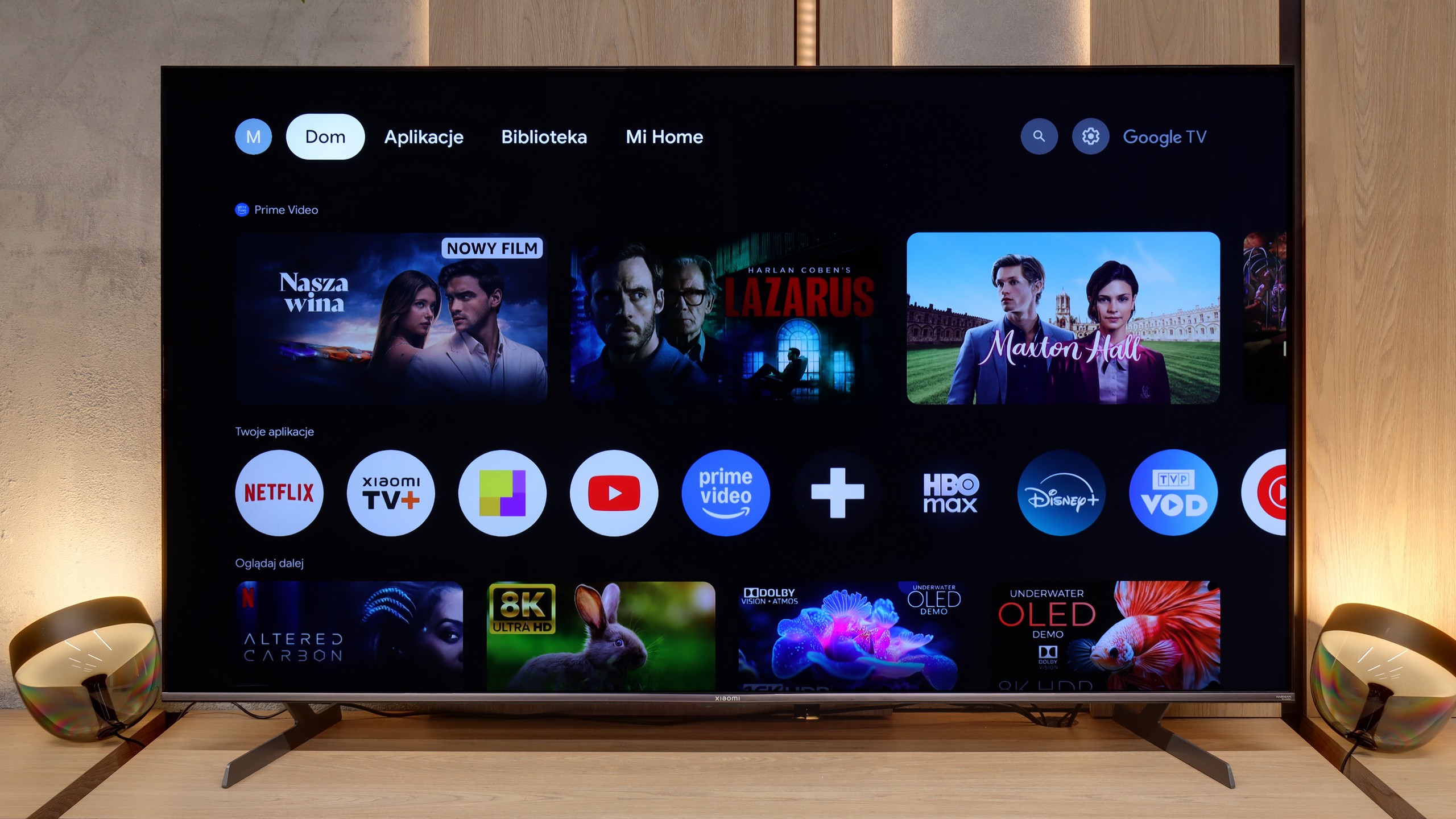
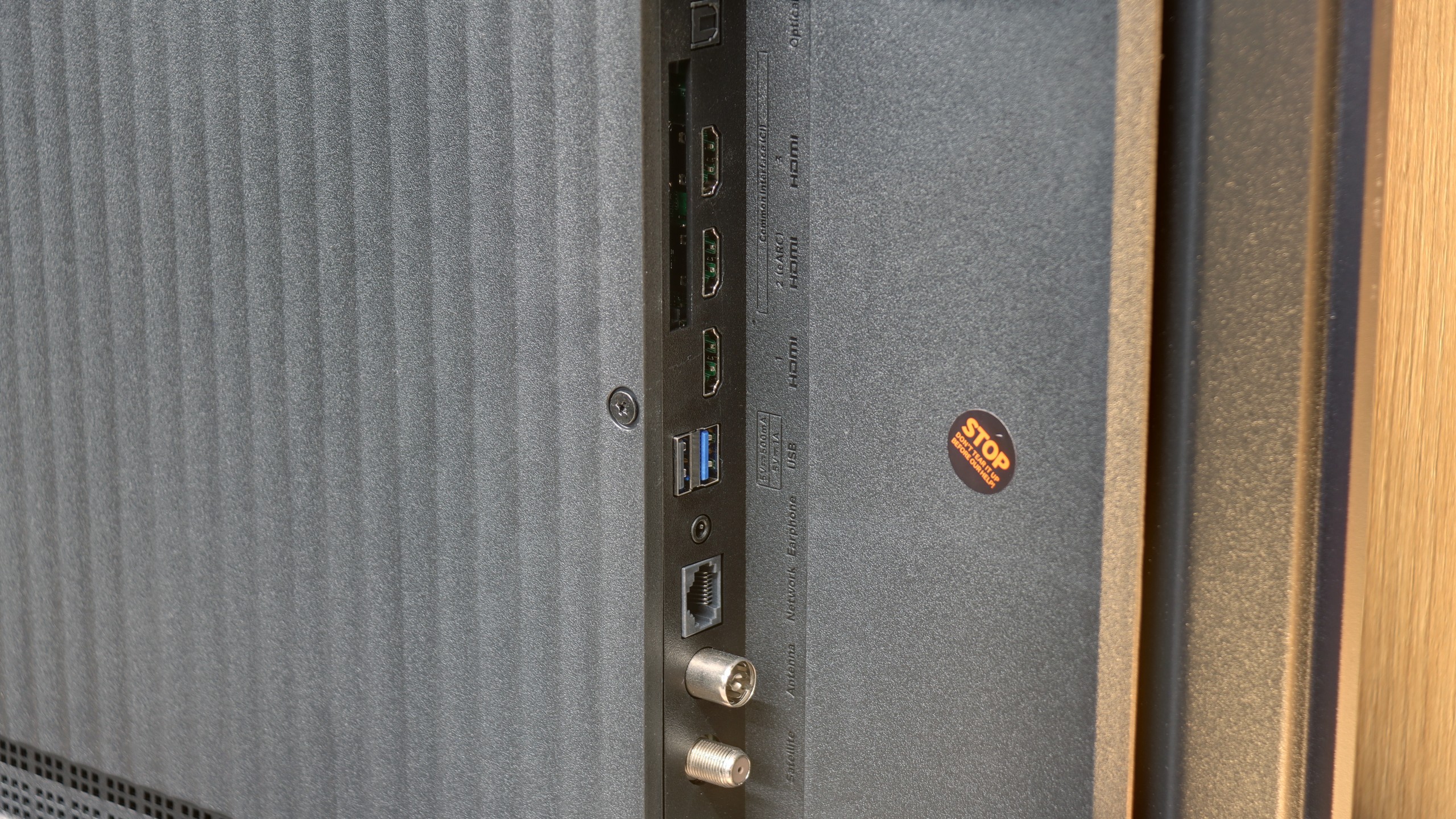

Smart TV – Titan OS
Philips MLED920 uses the proprietary Titan OS, which is just beginning its journey in the TV market, and unfortunately, this is evident at every turn. On one hand, we have basic features – such as support for AirPlay or the ability to mirror the screen from a smartphone, but on the other hand, its limitations quickly become apparent. Screen mirroring works only with a phone, but not with a laptop. Voice search? Yes, but it is only supported by Amazon Alexa and in languages supported by this assistant. The system runs fairly quickly, but every now and then it can "fail" and gives the impression of something unfinished, still developing.
Classic TV Functions
Titan OS does not pamper in terms of classic TV functions either. Besides the hybrid remote with a numeric keypad – which, although illuminated and cleverly designed in two modes, unfortunately works via infrared – we won't find anything that could truly distinguish the MLED920 from the competition. There is no USB recording or PiP function, and such solutions could be useful in this class. From unusual additions, we have an analog output in the form of a jack, which allows connecting headphones or older speakers. It’s a small nod to users who still use older equipment.
Ambilight TV
What definitely diverts attention from the shortcomings of Titan OS is the unique, three-sided Ambilight system. Here, Philips still plays in its own league and can amaze those who have not encountered this addition. The colorful lighting that responds to screen content gives screenings a unique atmosphere and is something that the competition does not offer in a similar form. It is Ambilight that is meant to ensure that other issues – both system and functional – take a back seat.
Operating System (Google TV)
A significant advantage of the Xiaomi S Pro 2026 is undoubtedly the presence of the Google TV system. This gives us access to a massive library of applications – we can find literally everything here, from leading VOD platforms to niche players. The system also offers a multitude of useful features, such as built-in Chromecast, support for AirPlay and Screen Mirroring, and an efficiently working voice search. The Google TV system itself is great, but one must take a slight caution regarding its implementation by Xiaomi. During our tests, it experienced a proverbial "hitch." Animations could lag a bit, and the response to commands wasn't immediate. This is definitely not the level of fluidity that we know from top, significantly more expensive models equipped with more powerful processors.
TV Features and Connectivity
So how does the S Pro 2026 perform as a "conventional" television? Unfortunately, we have less good news here. In terms of classic TV viewing, we can mainly praise this model for having a convenient remote control with a numeric keypad – which (surprisingly) is not a standard today. However, this is where the conveniences end. We won't find either USB recording (PVR) capabilities or PiP (Picture-in-Picture) options. On the plus side, we credit the extensive Bluetooth connectivity options. We had no trouble connecting external devices to the TV, such as wireless headphones, a keyboard, or a mouse, which significantly facilitates operation.
Playing files from USB
8.5/10
6.8/10
Supported photo formats:
Maximum photo resolution:
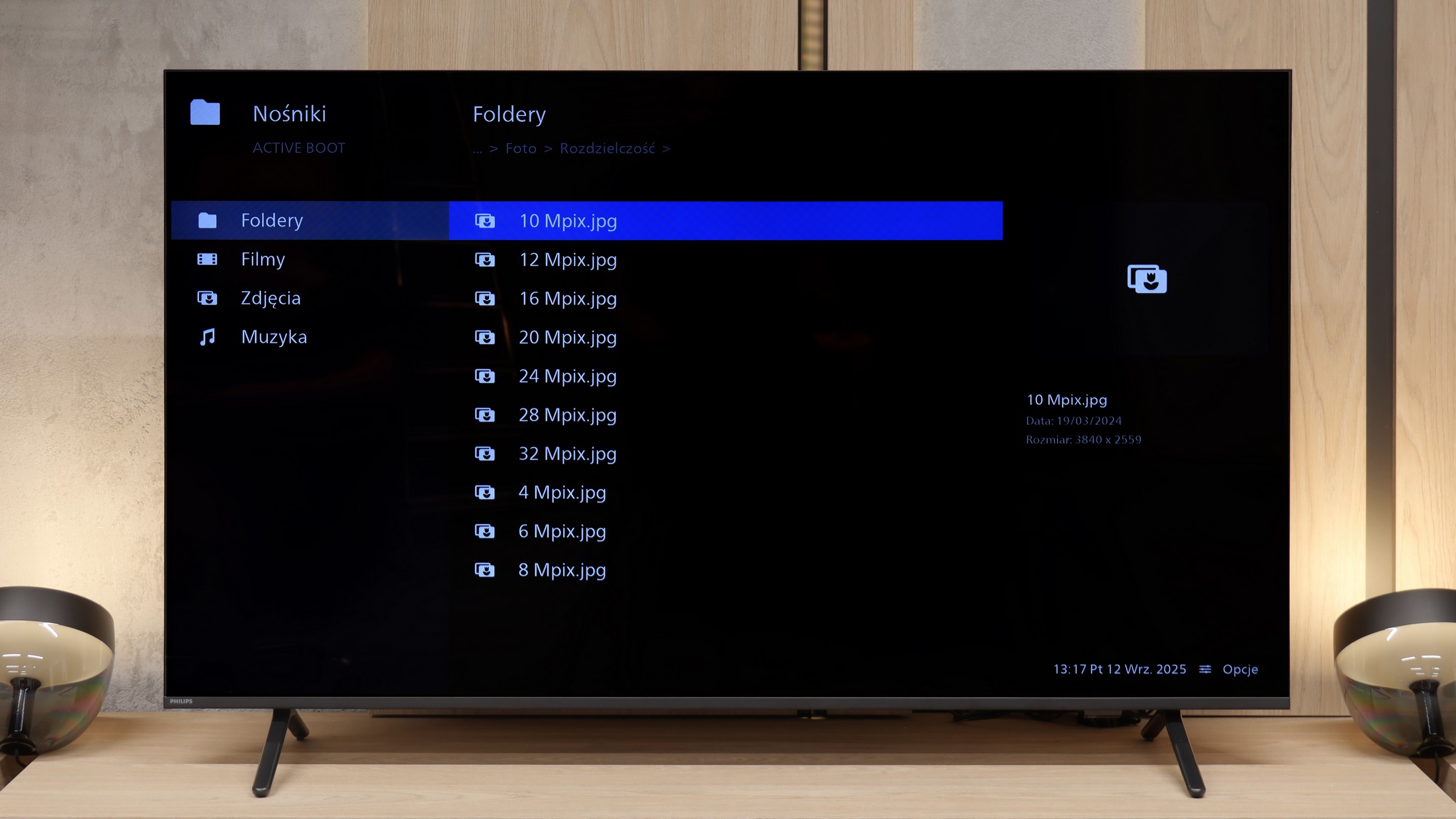

The built-in player in the Philips MLED920 works quite well and handles most popular audio and video files without major issues – exactly as you can see in our test table. There is no need to worry about typical movie or music formats. We can only nitpick about the somewhat selective support for photo formats and certain resolutions.
The built-in, default media player in the Xiaomi S Pro 2026 is – given the capabilities of the Google TV system – simply weak. Its biggest drawback is that it does not support characters other than those from the standard alphabet. Consequently, it does not display, among other things, Polish fonts in subtitles or file names. Fortunately, as we mentioned before, the heart of the television is Google TV. This system allows for the instant installation of an external, significantly better player, such as VLC or Kodi. For this television, we recommend installing an alternative player immediately after the first startup.
Apps
6.7/10
9.6/10














































Sound
6.2/10
7.1/10
- Maximum volume88dB82dB
- Dolby Digital Plus 7.1
- Dolby True HD 7.1
- Dolby Atmos in Dolby Digital Plus (JOC)
- Dolby Atmos in Dolby True HD
- DTS:X in DTS-HD MA
- DTS-HD Master Audio
The sound in the Philips MLED920 is probably not going to be the element that impresses you the most. It sounds rather flat, lacking depth and clearer bass, which means that movies or concerts don’t have the extra layer of immersion that a better audio system can provide. However, it must be noted that the volume is really decent – the TV can reach up to 88 decibels. A big plus of the MLED920 is not so much the sound quality itself, but the support for audio formats. Philips has ensured compatibility with nearly all the major standards, including Dolby Atmos, DTS, and Dolby TrueHD 7.1. As a result, if someone decides to connect an external soundbar or receiver, they will encounter no limitations and will be able to enjoy the fullness of cinematic sound.
We must admit that the S Pro 2026 surprised us quite positively. The television is equipped with a 30W speaker system that, for its class, sounds really very good. There is even a noticeable slight hint of bass, and the mid and high tones are quite well balanced. Of course, all of this is within the capabilities provided by the television's speakers, but it is a level we did not expect from such a relatively inexpensive model. A huge plus is also the support for top audio technologies. The television is capable of decoding not only the very popular Dolby Atmos format but also the recently quite rare DTS:X, which we mainly find on Blu-ray discs.
Sound Quality Test
Acoustic Measurements
88dBC (Max)
75dBC
82dBC (Max)
75dBC
